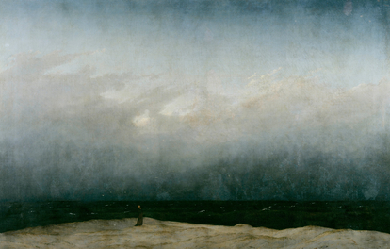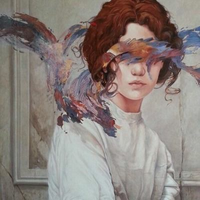
Info
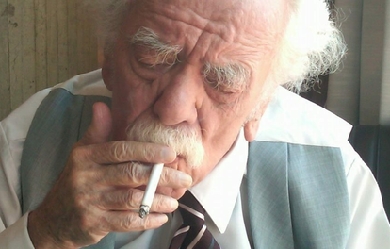
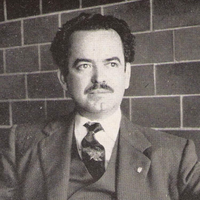
Rubén Bonifaz Nuño (Córdoba, 12 de noviembre de 1923 - México D. F., 31 de enero de 2013) fue un poeta y clasicista mexicano. Bonifaz Nuño nació en Córdoba (Veracruz) y estudió derecho en la Universidad Nacional Autónoma de México (UNAM) entre 1940 y 1947. En 1960, empezó a enseñar latín en la Facultad de Filosofía y Letras de la UNAM y recibió un doctorado en Arte y cultura clásica en 1970. Bonifaz Nuño ha publicado traducciones de las obras de Catulo, Propercio, Lucrecio: De la natura de las cosas, Píndaro, Ovidio: Metamorfosis, Arte de amar y Remedios del amor, Lucano, Virgilio: La Eneida y las Geórgicas, Julio César: Guerra gálica, Cicerón: Acerca de los deberes y otros autores clásicos al español. Su traducción de 1973 de la Eneida fue aclamada por la crítica. Fue elegido miembro de número de la Academia Mexicana de la Lengua el 19 de agosto de 1962, tomando posesión de la silla V el 30 de agosto de 1963. Bonifaz renunció al cargo el 26 de julio de 1996.1 Fue admitido en el Colegio Nacional en 1972 con el discurso de ingreso "La fundación de la ciudad".2 Fue ganador del Premio Nacional de Literatura y Lingüística en 1974. Rubén Bonifaz Nuño murió en la ciudad de México el 31 de enero de 2013. Traducciones * Eneida (1973) * Arte de amar, Remedios del amor (1975) * Metamorfosis (1979) *De la natura de las cosas (1984) *Hipólito (1998) *Ilíada (2008) Ensayos * El amor y la cólera: Cayo Valerio Catulo (1977) * Los reinos de Cintia. Sobre Propercio (1978) Poesía * La muerte del ángel (1945) * Imágenes (1953) * Los demonios y los días (1956) * El manto y la corona (1958) * Canto llano a Simón Bolívar (1958) * Fuego de pobres (1961) * Siete de espadas (1966) * El ala del tigre (1969) * La flama en el espejo (1971) * Tres poemas de antes (1978) * As de oros (1981) * El corazón de la espiral (1983) * Albur de amor (1987) * Pulsera para Lucía Méndez (1989) * Del templo de su cuerpo (1992 * Trovas del mar unido (1994). Referencias Wikipedia - http://es.wikipedia.org/wiki/Rubén_Bonifaz_Nuño
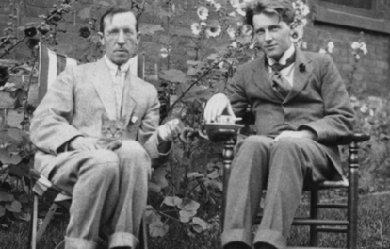
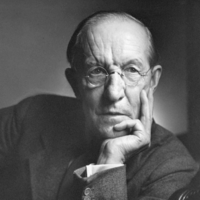
Duncan Campbell Scott (August 2, 1862– December 19, 1947) was a Canadian bureaucrat, poet and prose writer. With Charles G.D. Roberts, Bliss Carman, and Archibald Lampman, he is classed as one of Canada’s Confederation Poets. Scott was a Canadian lifetime civil servant who served as deputy superintendent of the Department of Indian Affairs from 1913 to 1932, and is better known today for advocating the assimilation of Canada’s First Nations peoples in that capacity. Life and legacy Scott was born in Ottawa, Ontario, the son of Rev. William Scott and Janet MacCallum. He was educated at Stanstead Wesleyan College. Early in life, he became an accomplished pianist. Scott wanted to be a doctor, but family finances were precarious, so in 1879 he joined the federal civil service. As the story goes, q:William Scott might not have money [but] he had connections in high places. Among his acquaintances was the prime minister, Sir John A. Macdonald, who agreed to meet with Duncan. As chance would have it, when Duncan arrived for his interview, the prime minister had a memo on his desk from the Indian Branch of the Department of the Interior asking for a temporary copying clerk. Making a quick decision while the serious young applicant waited in front of him, Macdonald wrote across the request: 'Approved. Employ Mr. Scott at $1.50.’ Scott "spent his entire career in the same branch of government, working his way up to the position of deputy superintendent of Indian Affairs in 1913, the highest non-elected position possible in his department. He remained in this post until his retirement in 1932.” Scott’s father also subsequently found work in Indian Affairs, and the entire family moved into a newly built house on 108 Lisgar St., where Duncan Campbell Scott would live for the rest of his life. In 1883 Scott met fellow civil servant, Archibald Lampman. It was the beginning of an instant friendship that would continue unbroken until Lampman’s death sixteen years later.... It was Scott who initiated wilderness camping trips, a recreation that became Lampman’s favourite escape from daily drudgery and family problems. In turn, Lampman’s dedication to the art of poetry would inspire Scott’s first experiments in verse. By the late 1880s Scott was publishing poetry in the prestigious American magazine, Scribner’s. In 1889 his poems “At the Cedars” and “Ottawa” were included in the pioneering anthology, Songs of the Great Dominion. Scott and Lampman "shared a love of poetry and the Canadian wilderness. During the 1890s the two made a number of canoe trips together in the area north of Ottawa.” In 1892 and 1893, Scott, Lampman, and William Wilfred Campbell wrote a literary column, “At the Mermaid Inn,” for the Toronto Globe. "Scott... came up with the title for it. His intention was to conjure up a vision of The Mermaid Inn Tavern in old London where Sir Walter Raleigh founded the famous club whose members included Ben Jonson, Beaumont and Fletcher, and other literary lights. In 1893 Scott published his first book of poetry, The Magic House and Other Poems. It would be followed by seven more volumes of verse: Labor and the Angel (1898), New World Lyrics and Ballads (1905), Via Borealis (1906), Lundy’s Lane and Other Poems (1916), Beauty and Life (1921), The Poems of Duncan Campbell Scott (1926) and The Green Cloister (1935). In 1894, Scott married Belle Botsford, a concert violinist, whom he had met at a recital in Ottawa. They had one child, Elizabeth, who died at 12. Before she was born, Scott asked his mother and sisters to leave his home (his father had died in 1891), causing a long-time rift in the family. In 1896 Scott published his first collection of stories, In the Village of Viger, "a collection of delicate sketches of French Canadian life. Two later collections, The Witching of Elspie (1923) and The Circle of Affection (1947), contained many fine short stories." Scott also wrote a novel, although it was not published until after his death (as The Untitled Novel, in 1979). After Lampman died in 1899, Scott helped publish a number of editions of Lampman’s poetry. Scott “was a prime mover in the establishment of the Ottawa Little Theatre and the Dominion Drama Festival.” In 1923 the Little Theatre performed his one-act play, Pierre; it was later published in Canadian Plays from Hart House Theatre (1926). His wife died in 1929. In 1931 he married poet Elise Aylen, more than 30 years his junior. After he retired the next year, "he and Elise spent much of the 1930s and 1940s travelling in Europe, Canada and the United States.” He died in December 1947 in Ottawa at the age of 85 and is buried in Ottawa’s Beechwood Cemetery. Indian Affairs Prior to taking up his position as head of the Department of Indian Affairs, in 1905 Scott was one of the Treaty Commissioners sent to negotiate Treaty No. 9 in Northern Ontario. Aside from his poetry, Scott made his mark in Canadian history as the head of the Department of Indian Affairs from 1913 to 1932. Even before Confederation, the Canadian government had adopted a policy of assimilation under the Gradual Civilization Act 1857. One biographer of Scott states that: The Canadian government’s Indian policy had already been set before Scott was in a position to influence it, but he never saw any reason to question its assumption that the 'red’ man ought to become just like the 'white’ man. Shortly after he became Deputy Superintendent, he wrote approvingly: ‘The happiest future for the Indian race is absorption into the general population, and this is the object and policy of our government.’... Assimilation, so the reasoning went, would solve the ‘Indian problem,’ and wrenching children away from their parents to 'civilize’ them in residential schools until they were eighteen was believed to be a sure way of achieving the government’s goal. Scott... would later pat himself on the back: ‘I was never unsympathetic to aboriginal ideals, but there was the law which I did not originate and which I never tried to amend in the direction of severity.’ while Scott himself wrote: I want to get rid of the Indian problem. I do not think as a matter of fact, that the country ought to continuously protect a class of people who are able to stand alone… Our objective is to continue until there is not a single Indian in Canada that has not been absorbed into the body politic and there is no Indian question, and no Indian Department, that is the whole object of this Bill. In 1920, under Scott’s direction, and with the concurrence of the major religions involved in native education, an amendment to the Indian Act made it mandatory for all native children between the ages of seven and fifteen to attend school. Attendance at a residential school was made compulsory. Although a reading of Bill 14 states that no particular kind of school was stipulated. Scott was in favour of residential schooling for aboriginal children, as he believed removing them from the influences of home and reserve would hasten the cultural and economic transformation of the whole aboriginal population. In cases where a residential school was the only kind available, residential enrollment did become mandatory, and aboriginal children were compelled to leave their homes, their families and their culture, with or without their parents’ consent. However, in 1901, 226 of the 290 Indian schools across Canada were day schools, and by 1961, the 377 day schools far outnumbered the 56 residential institutions. CBC has reported that "In all, about 150,000 aboriginal, Inuit and Métis children were removed from their communities and forced to attend the schools." The 150,000 enrollment figure is an estimate not disputed by Aboriginal Affairs and Northern Development, but it is not clear what percentage were “removed from their communities and forced to attend the schools.” A percentage of the residential schools were in or close by the children’s communities. Moreover, while many aboriginal parents distrusted the residential schools or preferred to raise and educate their children in a traditional manner, other parents willingly enrolled their children, partly from a belief that the schooling of the “white man” would benefit them, and partly from a knowledge that schools would provide shelter, food and clothing which dire conditions on the reserve could not provide. Harsh criticism has been leveled at Scott and the residential school system, as children who attended some of the more poorly maintained or administered schools lived in terrible conditions; in some cases the mortality rate exceeded fifty percent due to the spread of infectious disease. This situation was made worse by the federal policy that tied funding to enrollment numbers, which resulted in some schools enrolling sick children in order to boost their numbers. Echoing Scott’s desire to absorb aboriginals into the wider Canadian population, many residential and day schools strongly discouraged students from speaking their native language, and harsh punishments were administered. Corporal punishment was sometimes justified by the belief that it was the only way to “save souls”, “civilize” the native children and, in the residential schools, punish runaways who might make the school responsible for injury or death while trying to return home. Many reports of physical, sexual and psychological abuse in the residential schools have surfaced over the years. Because any kind of scandal coming out of the residential schools would have caused Indian Affairs, the churches and the government of the day much embarrassment, incidents of abuse were often discounted or covered up. When Scott retired, his “policy of assimilating the Indians had been so much in keeping with the thinking of the time that he was widely praised for his capable administration.” At the time, Scott was able to point to evidence of success in increasing enrollment and attendance, as the number of First Nations children enrolled in any school rose from 11,303 in 1912 to 17,163 in 1932. Residential school enrollment during the same period rose from 3,904 to 8,213. Actual attendance figures from all schools had also risen sharply, going from 64% of enrollment in 1920 to 75% in 1930, and Scott attributed this rise partly to Bill 14's section on compulsory attendance but also to a more positive attitude among First Nations people toward education. However, despite the encouraging statistics, Scott’s efforts to bring about assimilation through residential schools could be judged a failure, as many former students retained their language, went on to maintain and preserve their tribe’s culture, and refused to accept full Canadian citizenship when it was offered. Moreover, over the long history of the residential system, only a minority of all enrolled students went beyond the elementary grades, and many former students found themselves lacking the skills that would enable them to find employment on or off the reserve. Honours and awards Scott was honoured for his writing during and after his lifetime. He was elected a Fellow of the Royal Society of Canada in 1899 and served as its president from 1921 to 1922. The Society awarded him the second-ever Lorne Pierce Medal in 1927 for his contributions to Canadian literature. In 1934 he was made a Companion of the Order of St. Michael and St. George. He also received honorary degrees from the University of Toronto (Doctor of Letters in 1922) and Queen’s University (Doctor of Laws in 1939). In 1948, the year after his death, he was designated a Person of National Historic Significance. Poetry Scott’s "literary reputation has never been in doubt. He has been well represented in virtually all major anthologies of Canadian poetry published since 1900.” In Poets of the Younger Generation (1901), Scottish literary critic William Archer wrote of Scott: He is above everything a poet of climate and atmosphere, employing with a nimble, graphic touch the clear, pure, transparent colours of a richly-furnished palette.... Though it must not be understood that his talent is merely descriptive. There is a philosophic and also a romantic strain in it... There is scarcely a poem of Mr. Scott’s from which one could not cull some memorable descriptive passage.... As a rule Mr. Scott’s workmanship is careful and highly finished. He is before everything a colourist. He paints in lines of a peculiar and vivid translucency. But he is also a metrist of no mean skill, and an imaginative thinker of no common capacity. The Government of Canada biography of him says that: Although the quality of Scott’s work is uneven, he is at his best when describing the Canadian wilderness and Indigenous peoples. Although they constitute a small portion of his total output, Scott’s widely recognized and valued 'Indian poems’ cemented his literary reputation. In these poems, the reader senses the conflict that Scott felt between his role as an administrator committed to an assimilation policy for Canada’s Native peoples and his feelings as a poet, saddened by the encroachment of European civilization on the Indian way of life. “There is not a really bad poem in the book,” literary critic Desmond Pacey said of Scott’s first book, The Magic House and Other Poems, “and there are a number of extremely good ones.” The 'extremely good ones’ include the strange, dream-like sonnets of “In the House of Dreams.” “Probably the best known poem from the collection is ‘At the Cedars,’ a grim narrative about the death of a young man and his sweetheart during a log-jam on the Ottawa River. It is crudely melodramatic,... but its style—stark understatement, irregular lines, and abrupt rhymes—makes it the most experimental poem in the book.” His next book, Labour and the Angel, “is a slighter volume than The Magic House in size and content. The lengthy title poem makes dreary reading.... Of greater interest is his growing willingness to experiment with stanza form, variations in line length, use of partial rhyme, and lack of rhyme.” Notable new poems included “The Cup” and the sonnet “The Onandaga Madonna.” But arguably “the most memorable poem in the new collection” was the fantasy, “The Piper of Arll.” One person who long remembered that poem was future British Poet Laureate John Masefield, who read “The Piper of Arll” as a teenager and years later wrote to Scott: I had never (till that time) cared very much for poetry, but your poem impressed me deeply, and set me on fire. Since then poetry has been the one deep influence in my life, and to my love of poetry I owe all my friends, and the position I now hold. New World Lyrics and Ballads (1905) revealed “a voice that is sounding ever more different from the other Confederation Poets... his dramatic power is increasingly apparent in his response to the wilderness and the lives of the people who lived there.” The poetry included “On the Way to the Mission” and the much-anthologized “The Forsaken,” two of Scott’s best-known “Indian poems.” Lundy’s Lane and Other Poems (1916) seemed “to have been cobbled together at the insistence of his publishers, who wanted a collection of his work that had not been published in any previous volume.”. The title poem was one that had won Scott, "in the Christmas Globe contest of 1908,... the prize of one hundred dollars, offered for the best poem on a Canadian historical theme.". Other notable poems in the volume include the pretty lyric “A Love Song,” the long meditation, “The Height of Land,” and the even longer “Lines Written in Memory of Edmund Morris.” Anthologist John Garvin called the last “so original, tender and beautiful that it is destined to live among the best in Canadian literature.” “In his old age, Scott would look back upon Beauty and Life (1921) as his favourite among his volumes of verse," E.K. Brown tells us, adding: “In it most of the poetic kinds he cared about are represented.” There is a great diversity, from the moving war elegy “To a Canadian Aviator Who Died For His Country in France,” to the strange, apocalyptic “A Vision.” The Green Cloister, published after Scott’s retirement, "is a travelogue of the sites he visited in Europe with Elise: Lake Como, Ravelllo, Kensington Gardens, East Gloucester, etc.—descriptive and contemplative poems by an observant tourist. Those with a Canadian setting include two Indian poems of near-melodrama—'A Scene at Lake Manitou’ and 'At Gull Lake, August 1810'—that are in stark contrast to the overall serenity of the volume." More typical is the title poem, “Chiostro Verde.” The Circle of Affection (1947) contains 26 poems Scott had written since Cloister, and several prose pieces, including his Royal Society address on “Poetry and Progress.” It includes “At Delos,” which brings to mind the poet’s approaching death: There is no grieving in the world As beauty fades throughout the years: The pilgrim with the weary heart Brings to the grave his tears. Reputation as an assimilationist In 2003, Scott’s Indian Affairs legacy came under attack from Neu and Therrien: [Scott] took a romantic interest in Native traditions, he was after all a poet of some repute (a member of the Royal Society of Canada), as well as being an accountant and a bureaucrat . He was three people rolled into one confusing and perverse soul. The poet romanticized the whole 'noble savage’ theme, the bureaucrat lamented our inability to become civilized, the accountant refused to provide funds for the so-called civilization process. In other words, he disdained all ‘living’ Natives but “extolled the freedom of the savages”. According to Encyclopædia Britannica, Scott is "best known at the end of the 20th century," not for his writing, but “for advocating the assimilation of Canada’s First Nations peoples.” As part of their Worst Canadian poll, a panel of experts commissioned by Canada’s National History Society named Scott one of the Worst Canadians in the August 2007 issue of The Beaver. In his 2013 Conversations with a Dead Man: The Legacy of Duncan Campbell Scott, fabulist Mark Abley explored the paradoxes surrounding Scott’s career. Abley did not attempt to defend Scott’s work as a bureaucrat, but he showed that Scott is more than simply a one-dimensional villain. Controversy over Arc Poetry prize Arc Poetry Magazine renamed the annual “Archibald Lampman Award” (given to a poet in the National Capital Region) to the Lampman-Scott Award in recognition of Scott’s enduring legacy in Canadian poetry, with the first award under the new name given out in 2007. The winner of the 2008 award, Shane Rhodes, turned over half of the $1,500 prize money to the Wabano Centre for Aboriginal Health, a First Nations health centre. “Taking that money wouldn’t have been right, with what I’m writing about,” Rhodes said. The poet was researching First Nations history and found Scott’s name repeatedly referenced. In the words of a CBC News report, Rhodes felt “Scott’s legacy as a civil servant overshadows his work as a pioneer of Canadian poetry”. The editor of Arc Poetry Magazine, Anita Lahey, responded with a statement that she thought Scott’s actions as head of Indian Affairs were important to remember, but did not eclipse his role in the history of Canadian literature. “I think it matters that we’re aware of it and that we think about and talk about these things,” she said. “I don’t think controversial or questionable activities in the life of any artist or writer is something that should necessarily discount the literary legacy that they leave behind.” More recently, the magazine has stated on its website that "For the years 2007 through 2009, the Archibald Lampman Award merged with the Duncan Campbell Scott Foundation to become the Lampman-Scott Award in honour of two great Confederation Poets. This partnership came to an end in 2010, and the prize returned to its former identity as the Archibald Lampman Award for Poetry.” Publications Poetry * The Magic House and Other Poems. London: Methuen and Co. 1893. - The Magic House and Other Poems at Google Books * Labor and the Angel. Boston: Copeland & Day. 1898. – Labor and the Angel at Google Books– Labor and the Angel - Scholar’s Choice Edition at Google Books * New World Lyrics and Ballads. Toronto: Morang & Co. – New World Lyrics and Ballads at Google Books– New World Lyrics and Ballads - Scholar’s Choice Edition at Google Books * Via Borealis. Toronto: W. Tyrell. 1906. * Lundy’s Lane and Other Poems. Toronto: McClelland, Stewart & Stewart. 1916. - Lundy’s Lane and Other Poems at Google Books * To the Canadian Mothers and Three Other Poems. Toronto: Mortimer. 1917. * “After a Night of Storm” (PDF). Dalhousie Review 1 (2). 1921. * Beauty and Life. Toronto: McClelland & Stewart. 1921. - Beauty and Life at Google Books * “Permanence” (PDF). Dalhousie Review 2 (4). 1923. * The Poems of Duncan Campbell Scott. Toronto: McClelland & Stewart. 1926. - The Poems of Duncan Campbell Scott at Google Books * “By the Sea” (PDF). Dalhousie Review 7 (1). 1927. * The Green Cloister: Later Poems. Toronto: McClelland & Stewart. 1935. - The Green Cloister: Later Poems at Google Books * Brown, E.K., ed. (1951). Selected Poems. Toronto: Ryerson. * Clever, Glenn, ed. (1974). Duncan Campbell Scott: Selected Poetry. Ottawa: Tecumseh. ISBN 978-0-9196-6252-0. * Souster, Raymond; Lochhead, Douglas, eds. (1985). Powassan’s Drum: Selected Poems of Duncan Campbell Scott. Ottawa: Tecumseh. ISBN 978-0-9196-6211-7. Fiction * In the Village of Viger. Boston: Copeland & Day. 1896. - In the Village of Viger at Google Books * The Witching of Elspie: A Book of Stories. Toronto: McClelland & Stewart. 1923. * The Circle of Affection and Other Pieces in Prose and Verse. Toronto: McClelland & Stewart. 1947. - mostly prose * Clever, Glenn, ed. (1987) [1972]. Selected Stories of Duncan Campbell Scott (revised 3rd ed.). Ottawa: University of Ottawa Press. ISBN 978-0-7766-0183-0. * Untitled Novel (posthumously published). Moonbeam, Ontario: Penumbra. 1979 [c. 1905]. ISBN 0-920806-04-X. * Ware, Tracy, ed. (2001). “The Uncollected Short Stories of Duncan Campbell Scott”. Duncan Campbell Scott. London, Ontario: Canadian Poetry Press. Non-fiction * John Graves Simcoe. Makers of Canada, volume VII. Toronto: Morang & Co. 1905. - John Graves Simcoe at Google Books * The Administration of Indian Affairs in Canada. Volume 3. Toronto: Canadian Institute of International Affairs. 1931. * Walter J. Phillips. Toronto: Ryerson. 1947. - Walter J. Phillips at Google Books * Bourinot, Arthur S., ed. (1960). More Letters of Duncan Campbell Scott. Ottawa: Bourinot. * Davies, Barrie, ed. (1979). At the Mermaid Inn: Wilfred Campbell, Archibald Lampman, Duncan Campbell Scott in the Globe 1892–93. Toronto: University of Toronto Press. ISBN 978-0-8020-6333-5. * Macdougall, Robert L., ed. (1983). The Poet and the Critic: A Literary Correspondence Between Duncan Campbell Scott and E.K. Brown. Ottawa: Carleton University Press. ISBN 978-0-8862-9013-9. Edited * Lampman, Archibald (1900). Scott, Duncan Campbell, ed. The Poems of Archibald Lampman. Toronto: Morang & Co. * Lampman, Archibald (1925). Scott, Duncan Campbell, ed. Lyrics of Earth: Sonnets and Ballads. Toronto: Musson. * Lampman, Archibald (1943). Scott, Duncan Campbell, ed. At the Long Sault and Other New Poems. Toronto: Ryerson. * Lampman, Archibald (1947). Scott, Duncan Campbell, ed. Selected Poems of Archibald Lampman. Toronto: Ryerson. References Wikipedia—https://en.wikipedia.org/wiki/Duncan_Campbell_Scott
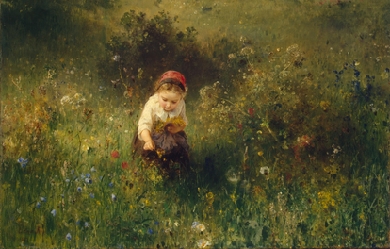
Mediante mi arte busco una conexión divina que me ate, en consecuencia, a no tener miedo en caída. Me llamo Manuel, actualmente tengo 21 años, vivo en Colombia y soy un amante de la vida. Soy un enloquecido fascinado con la espléndida obra del universo. El arte en general es un canal para drenar todo lo que siento y pienso, lo que me enseña el alma del mundo y aquellas señales en el lenguaje del universo.
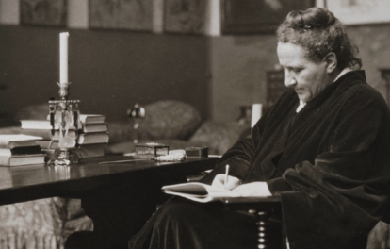
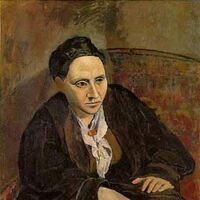
Gertrude Stein was born in Allegheny, Pennsylvania, on February 3, 1874, to wealthy German-Jewish immigrants. At the age of three, her family moved first to Vienna and then to Paris. They returned to America in 1878 and settled in Oakland, California. Her mother, Amelia, died of cancer in 1888 and her father, Daniel, died 1891. Stein attended Radcliffe College from 1893 to 1897, where she specialized in Psychology under noted psychologist William James. After leaving Radcliffe, she enrolled at the Johns Hopkins University, where she studied medicine for four years, leaving in 1901. Stein did not receive a formal degree from either institution. In 1903, Stein moved to Paris with Alice B. Toklas, a younger friend from San Francisco who would remain her partner and secretary throughout her life. The couple did not return to the United States for over thirty years. Together with Toklas and her brother Leo, an art critic and painter, Stein took an apartment on the Left Bank. Their home, 27 rue de Fleurus, soon became gathering spot for many young artists and writers including Henri Matisse, Ezra Pound, Pablo Picasso, Max Jacob, and Guillaume Apollinaire. She was a passionate advocate for the "new" in art, her literary friendships grew to include writers as diverse as William Carlos Williams, Djuana Barnes, F. Scott Fitzgerald, James Joyce, and Ernest Hemingway. It was to Hemingway that Stein coined the phrase "the lost generation" to describe the expatriate writers living abroad between the wars. By 1913, Stein's support of cubist painters and her increasingly avant-garde writing caused a split with her brother Leo, who moved to Florence. Her first book, Three Lives, was published in 1909. She followed it with Tender Buttons in 1914. Tender Buttons clearly showed the profound effect modern painting had on her writing. In these small prose poems, images and phrases come together in often surprising ways—similar in manner to cubist painting. Her writing, characterized by its use of words for their associations and sounds rather than their meanings, received considerable interest from other artists and writers, but did not find a wide audience. Sherwood Anderson in the introduction to Geography and Plays (1922) wrote that her writing "consists in a rebuilding, and entire new recasting of life, in the city of words." Among Stein's most influential works are The Making of Americans (1925); How to Write (1931); The Autobiography of Alice B. Toklas (1933), which was a best-seller; and Stanzas in Meditation and Other Poems [1929-1933] (1956). In 1934, the biographer T. S. Matthews described her as a "solid elderly woman, dressed in no-nonsense rough-spun clothes," with "deep black eyes that make her grave face and its archaic smile come alive." Stein died at the American Hospital at Neuilly on July 27, 1946, of inoperable cancer.
.jpeg)
Vicente Gerbasi (Canoabo, Carabobo); 2 de junio de 1913 - Caracas, Venezuela; 28 de diciembre de 1992) fue escritor, poeta, político y diplomático venezolano, considerado el poeta contemporáneo venezolano más representativo y uno de los más brillantes exponentes de la lírica vanguardista, además de ser de los escritores más influyentes del siglo XX en Venezuela, así como de los más reconocidos. Miembro del Grupo Viernes, uno de los más notorias sociedades poéticas de Venezuela, Gerbasi no sólo lograría convertirse en su máximo exponente, sino que además se desenvolvería en una extraordinaria carrera política y diplomático, siendo miembro fundador del Partido Democrático Nacional junto con Rómulo Betancourt, Agregado Cultural de la embajada Venezolana en Bogotá, Cónsul de Venezuela en la Habana y Ginebra, Consejero Cultural de la Embajada Venezolana en Chile y Embajador de Venezuela en Haití, Israel, Dinamarca, Noruega y Polonia. Biografía Vicente Gerbasi nació el 2 de junio de 1913 en Canoabo, pequeña población del estado Carabobo, en Venezuela; hijo de los inmigrantes italianos Juan Bautista Gerbazi y Ana María Federico Pifano, quienes se habían establecido en esa región venezolana. Realizó estudios primarios y secundarios en Italia. En 1937 funda el Grupo "Viernes",conjuntamente con los poetas Pascual Venegas Filardo, Luis Fernando Alvarez, José Ramón Heredia, Oscar Rojas Jiménez, Ángel Miguel Queremel, Otto de Sola y el crítico Fernando Cabrices. Ese mismo año publica su primer libro de poesías, Vigilia del Náufrago. En 1968, Gerbasi gana el Premio Nacional de Literatura. Se desempeñó como diplomático en Colombia, donde comenzó su carrera diplomática en 1946 como Agregado Cultura luego en Cuba, Suiza y Chile. En 1959 fue designado Embajador en Haití, posteriormente en Israel (1960), luego en Dinamarca y Noruega (1964)y en Polonia (1969). Vicente Gerbasi es considerado el autor más representativo de la poesía venezolana contemporánea. En su libro de ensayos "Creación y Símbolo", el propio Gerbasi ha expresado: "En poesía las palabras no poseen un valor justo,filológico,etimológico,sino que adquieren un valor múltiple,que escapa a la lógica corriente del lenguaje". Existe en la escritura de Gerbazi una intensa investigación del lenguaje para inquirir en las peculiaridades entrañables del país. Su propósito consiste en señalar una posible identidad, pero sin fijarla en esquemas inflexibles, sino destacando sus connotaciones mágicas y su cosmogonía poética, entonces su lenguaje se hace necesario y eficaz para nombrar ese universo. En "Poema de la noche" de 1943, Gerbasi muestra estados subjetivos que alcanzan a objetivarse y concretarse en hechos reales o fenómenos naturales: "¡Haz grande mi tristeza,/misterio de la noche!/Que pase como un viento/por las sombras del campo/coronando los montes/de nieblas solitarias/tañendo en las aldeas/arpas de eternidad". Es la subjetivación que se concreta en el mundo real: "En la hierba tostada por el día, el sueño del caballo/nos rodea de flores,como el dibujo de un niño". En 1945 Gerbasi publica su libro más esencial y conocido: Mi padre el inmigrante. Se trata de un extenso poema integrado por treinta cantos basados en un mismo hilo temático: La figura mítica del padre a través de la cual opera la emoción frente al paisaje. Mi padre el inmigrante plantea enigmas metafísicos, recrea supersticiones, climas, espantos, mitos, leyendas, costumbres rurales, toda una flora y fauna fascinante y mágica. Gerbasi ha sido traducido al francés, al inglés, al italiano,al portugués, al danés, al sueco, al rumano al hebreo, al árabe y al chino. Falleció el 28 de diciembre de 1992. Obras * Vigilia del náufrago, 1937 * Bosque doliente, 1940 * Liras, 1943 * Poemas de la noche y de la tierra, 1943 * Mi padre, el inmigrante, 1945 * Tres nocturnos, 1947 * Poemas, 1947 * Los espacios cálidos, 1952 * Círculos del trueno, 1953 * La rama del relámpago, 1953 * Tirano de sombra y fuego, 1955 * Por arte del sol, 1958 * Olivos de eternidad, 1961 * Retumba como un sótano del cielo, 1977 * Edades perdidas, 1981 * Un día muy distante, 1987 * El solitario viento de las hojas, 1990 * Iniciación a la intemperie, 1990 Referencias http://es.wikipedia.org/wiki/Vicente_Gerbasi
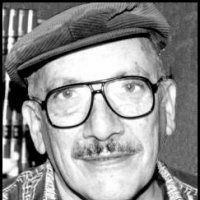
História de Vida La amenaza de un atentado en el barrio de Once, cercano al almacén que atendía junto a su esposa, dio un vuelco inesperado en la vida de Ramón Valdez y lo convirtió en poeta casi por casualidad. Hoy, a raíz de ese incidente adverso, es famoso por las estrofas que se cuelan en los vagones de la línea D del subte, con las que invita a los usuarios a abandonar la rutina propia del viaje. Don Ramón y Doña Elsa fueron durante más de 20 años almaceneros, pero se vieron obligados a cerrar el comercio, que se encontraba próximo a la Sociedad Argentina Hebraica, cuando el temor a que se produjeran nuevas ofensivas contra la comunidad judía en la Argentina se afianzó en la zona y llevó a los vecinos a tomar decisiones drásticas, de esas de las que luego es difícil volver atrás. "De golpe y porrazo Hebraica cerró y dejaron de venir los socios que venían a comprarme al almacén. Pasaron casi cuatro años que aguanté sin cerrar, porque vivíamos de eso, pero hubo un momento en el que no quedó nada más por hacer. Junté cosa por cosa todo lo tenía y me fui a mi casa a los 62 años, sin saber cómo seguir", relató a la nación.com el "señor de los poemas", como lo suelen llamar algunos de los viajeros frecuentes del subte. Los primeros pasos de este almacenero devenido en poeta no fueron precisamente ordenados. Más bien constituyeron ensayos hasta transformarse en el ingreso principal de la familia, sin contar la módica jubilación que había obtenido por su trabajo en el local ubicado en Sarmiento y Pasteur. Tampoco respondieron a una pasión en particular. Simplemente, se orientaron hacia un único deseo: el de poder salir adelante en medio de la bronca, el enojo y la tristeza que lo atormentaban por esos días. Una oportunidad. Un aviso publicado en un diario, que leyó una de sus hijas, acercó a Don Ramón al oficio de escribir. Se trataba de una publicidad sobre la apertura de una escuela secundaria nocturna destinada a adultos. No lo dudó. Se inscribió ese mismo día en el Colegio Evangélico Villa Devoto y recibió media beca en el arancel para poder cursar. "Estábamos todos chochos. Mis compañeros porque yo era una persona mayor y yo porque tenía adonde ir. Más que nada buscaba contención", confesó. Una de sus principales mentoras en el mundo de la poesía fue justamente la profesora de lengua del instituto. Ella fue la encargada de animarlo a contar historias sencillas, de la vida cotidiana , "de esas que le llegan a la gente", inspirándose en poemas del uruguayo Mario Benedetti, de quien hoy se confiesa como un gran admirador. Las cosas empezaban a mejorar. En las aulas del colegio nació su atracción por la escritura y comenzó a gestarse también una nueva fuente de trabajo. "Sentía la necesidad de ganarme la vida. Era lo que siempre había hecho", aseguró. Sobre ruedas. Con un cuadernillo que agrupaba sus primeros siete poemas, decidió un domingo ir a probar suerte, en compañía de su familia, a Parque Centenario. "Empecé a repartirlos a orillas del lago. Se los daba a la gente para que los leyera y después pasaba a recogerlos. Ese domingo me gané 6 pesos, que en ese momento era un montón. Significaba el vino, el tomate y los fideos", recordó, mientras una sonrisa cargada de picardía y satisfacción aparecía en su cara. Pero la espera entre un fin de semana y el siguiente para la venta se hacía ardua y había que mantener la casa. Y fue ahí cuando se acordó de haber visto a un chico en el subte que vendía poemas: "Y pensé: ¿Por qué no?". Tímidamente Ramón describió: "Vivía en Corrientes y Medrano, pero me fui al subte que quedaba más lejos mi casa, el de Retiro, donde nadie me conocía. Cuando vi venir el primer subte, dije: «No, este viene muy vacío, me quedo un poquito más». Después pasó otro, pero tampoco subí porque venía muy lleno. Lo que pasaba en realidad es que tenía «chucho», una vergüenza terrible. Era muy difícil exponerse. Sentía que estaba mendigando. Pero después arranqué". Sus seguidores. Hoy, lejos de las góndolas o de la caja registradora del almacén, el poeta del subte disfruta de las muestras diarias de cariño que recibe de los usuarios del servicio, pero también de las que le envían los admiradores de su obra desde Colombia, México y España, para felicitarlo por su ejemplo de esfuerzo y dedicación a los casi 75 años. "Me generan la alegría más grande y me levantan el ánimo todos los días", indicó agradecido tras "haber encontrado su lugar en el mundo". Poema del Olvido Tú puedes olvidar y los recuerdos Se pegan a mi piel como un castigo. Tú puedes olvidar, yo sólo vivo Añorando el querer que se ha perdido. Tú puedes olvidar y en cada noche Mil vueltas yo me doy buscando olvido. Tú puedes olvidar. ¡Ay si pudiera! Olvidar como tú... sin un suspiro. Referencias http://sociedadedospoetasamigos.blogspot.com.es/2010/04/don-ramon-de-almagro-poeta-argentino.html
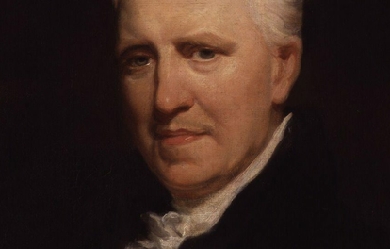

George Crabbe (/kræb/; 24 December 1754– 3 February 1832) was an English poet, surgeon, and clergyman. He is best known for his early use of the realistic narrative form and his descriptions of middle and working-class life and people. In the 1770s, Crabbe began his career as a doctor’s apprentice, later becoming a surgeon. In 1780, he travelled to London to make a living as a poet. After encountering serious financial difficulty and being unable to have his work published, he wrote to the statesman and author Edmund Burke for assistance. Burke was impressed enough by Crabbe’s poems to promise to help him in any way he could. The two became close friends and Burke helped Crabbe greatly both in his literary career and in building a role within the church. Burke introduced Crabbe to the literary and artistic society of London, including Sir Joshua Reynolds and Samuel Johnson, who read The Village before its publication and made some minor changes. Burke secured Crabbe the important position of Chaplain to the Duke of Rutland. Crabbe served as a clergyman in various capacities for the rest of his life, with Burke’s continued help in securing these positions. He developed friendships with many of the great literary men of his day, including Sir Walter Scott, whom he visited in Edinburgh, and William Wordsworth and some of his fellow Lake Poets, who frequently visited Crabbe as his guests. Lord Byron described him as “nature’s sternest painter, yet the best.” Crabbe’s poetry was predominantly in the form of heroic couplets, and has been described as unsentimental in its depiction of provincial life and society. The modern critic Frank Whitehead wrote that “Crabbe, in his verse tales in particular, is an important–indeed, a major–poet whose work has been and still is seriously undervalued.” Crabbe’s works include The Village (1783), Poems (1807), The Borough (1810), and his poetry collections Tales (1812) and Tales of the Hall (1819). Biography Early life Crabbe was born in Aldeburgh, Suffolk, the eldest child of George Crabbe Sr. The elder George Crabbe had been a teacher at a village school in Orford, Suffolk, and later in Norton, near Loddon, Norfolk; he later became a tax collector for salt duties, a position that his own father had held. As a young man he married an older widow named Craddock, who became the mother of his six children: George, his brothers Robert, John, and William, his sister Mary, and another sister who died as an infant. George Jr. spent his first 25 years close to his birthplace. He showed an aptitude for books and learning at an early age. He was sent to school while still very young, and developed an interest in the stories and ballads that were popular among his neighbors. His father owned a few books, and used to read passages from John Milton and from various 18th-century poets to his family. He also subscribed to a country magazine called Martin’s Philosophical Magazine, giving the “poet’s corner” section to George. The senior Crabbe had interests in the local fishing industry, and owned a fishing boat; he had contemplated raising his son George to be a seaman, but soon found that the boy was unsuited to such a career. George’s father respected his son’s interest in literature, and George was sent first to a boarding-school at Bungay near his home, and a few years later to a more important school at Stowmarket, where he gained an understanding of mathematics and Latin, and a familiarity with the Latin classics. His early reading included the works of William Shakespeare, Alexander Pope, who had a great influence on George’s future works, Abraham Cowley, Sir Walter Raleigh and Edmund Spenser. He spent three years at Stowmarket before leaving school to find a physician to be apprenticed to, as medicine had been settled on as his future career. In 1768 he was apprenticed to a local doctor at Wickhambrook, near Bury St Edmunds. This doctor practiced medicine while also keeping a small farm, and George ended up doing more farm labour and errands than medical work. In 1771 he changed masters and moved to Woodbridge, where he remained until 1775. While at Woodbridge he joined a small club of young men who met at an inn for evening discussions. Through his contacts at Woodbridge he met his future wife, Sarah Elmy. Crabbe called her “Mira”, later referring to her by this name in some of his poems. During this time he began writing poetry. In 1772, a lady’s magazine offered a prize for the best poem on the subject of hope, which Crabbe won. The same magazine printed other short pieces of Crabbe’s throughout 1772. They were signed “G. C., Woodbridge,” and included some of his lyrics addressed to Mira. Other known verses written while he was at Woodbridge show that he made experiments in stanza form modeled on the works of earlier English poets, but only showed some slight imitative skill. 1775 to 1785 His first major work, a satirical poem of nearly 400 lines in Pope’s couplet form entitled Inebriety, was self-published in 1775. Crabbe later said of the poem, which received little or no attention at the time, “Pray let not this be seen... there is very little of it that I’m not heartily ashamed of.” By this time he had completed his medical training and had returned home to Aldeburgh. He had intended to go on to London to study at a hospital, but he was forced through low finances to work for some time as a local warehouseman. He eventually travelled to London in 1777 to practice medicine, returning home in financial difficulty after a year. Crabbe continued to practice as a surgeon after returning to Aldeburgh, but as his surgical skills remained deficient, he attracted only the poorest patients, and his fees were small and undependable. This hurt his chances of an early marriage, but Sarah stayed devoted to him. In late 1779 he decided to move to London and see if he could make it as a poet, or, if that failed, as a doctor. He moved to London in April 1780, where he had little success, and by the end of May he had been forced to pawn some of his possessions, including his surgical instruments. He composed a number of works but was refused publication. He wrote several letters seeking patronage, but these were also refused. In June Crabbe witnessed instances of mob violence during the Gordon Riots, and recorded them in his journal. He was able to publish a poem at this time entitled The Candidate, but it was badly received by critics. He continued to rack up debts that he had no way of paying, and his creditors pressed him. He later told Walter Scott and John Gibson Lockhart that “during many months when he was toiling in early life in London he hardly ever tasted butchermeat except on a Sunday, when he dined usually with a tradesman’s family, and thought their leg of mutton, baked in the pan, the perfection of luxury.” In early 1781 he wrote a letter to Edmund Burke asking for help, in which he included samples of his poetry. Burke was swayed by Crabbe’s letter and a subsequent meeting with him, giving him money to relieve his immediate wants, and assuring him that he would do all in his power to further Crabbe’s literary career. Among the samples that Crabbe had sent to Burke were pieces of his poems The Library and The Village. A short time after their first meeting Burke told his friend Sir Joshua Reynolds that Crabbe had “the mind and feelings of a gentleman.” Burke gave Crabbe the footing of a friend, admitting him to his family circle at Beaconsfield. There he was given an apartment, supplied with books, and made a member of the family. The time he spent with Burke and his family helped by enlarging his knowledge and ideas, and introducing him to many new and valuable friends including Charles James Fox and Samuel Johnson. He completed his unfinished poems and revised others with the help of Burke’s criticism. Burke helped him have his poem, The Library, published anonymously in June 1781, by a publisher that had previously refused some of his work. The Library was greeted with modest praise from critics, and slight public appreciation. Through their friendship, Burke discovered that Crabbe was more suited to be a clergyman than a surgeon. Crabbe had a good knowledge of Latin and an evident natural piety, and was well read in the scriptures. He was ordained to the curacy of his native town on 21 December 1781 through Burke’s recommendation. He returned to live in Aldeburgh with his sister and father, his mother having died in his absence. Crabbe was surprised to find that he was poorly treated by his fellow townsmen, who resented his rise in social class. With Burke’s help, Crabbe was able to leave Aldeburgh to become chaplain to the Duke of Rutland at Belvoir Castle in Leicestershire. This was an unusual move on Burke’s part, as this kind of preferment would usually have been given to a family member or personal friend of the Duke or through political interest. Crabbe’s experience as Chaplain at Belvoir was not altogether happy. He was treated with kindness by the Duke and Duchess, but his slightly unpolished manners and his position as a literary dependent made his relations with others in the Duke’s house difficult, especially the servants. However, the Duke and Duchess and many of their noble guests shared an interest in Crabbe’s literary talent and work. During his time there, his poem The Village was published in May 1783, achieving popularity with the public and critics. Samuel Johnson said of the poem in a letter to Reynolds “I have sent you back Mr. Crabbe’s poem, which I read with great delight. It is original, vigorous, and elegant.” Johnson’s friend and biographer James Boswell also praised The Village. It was said at the time of publication that Johnson had made extensive changes to the poem, but Boswell responded by saying that “the aid given by Johnson to the poem, as to The Traveller and Deserted Village of Goldsmith, were so small as by no means to impair the distinguished merit of the author.” Crabbe was able to keep up his friendships with Burke, Reynolds, and others during the Duke’s occasional visits to London. He visited the theatre, and was impressed with the actresses Sarah Siddons and Dorothea Jordan. Around this time it was decided that, as Chaplain to a noble family, Crabbe was in need of a college degree, and his name was entered on the boards of Trinity College, Cambridge, through the influence of Bishop Watson of Llandaff, so that Crabbe could obtain a degree without residence. This was in 1783, but almost immediately afterwards he received an LL.B. degree from the Archbishop of Canterbury. This degree allowed Crabbe to be given two small livings in Dorsetshire, Frome St Quintin and Evershot. This promotion does not seem to have interfered with Crabbe’s residence at Belvoir or in London; it is likely that curates were placed in these situations. On the strength of these preferments and a promise of future assistance from the Duke, Crabbe and Sarah Elmy were married in December 1783, in the parish church of Beccles, where Miss Elmy’s mother lived, and a few weeks later went to live together at Belvoir Castle. In 1784 the Duke of Rutland became Lord Lieutenant of Ireland. It was decided that Crabbe was not to be on the Duke’s staff in Ireland, though the two men parted as close friends. The young couple stayed on at Belvoir for nearly another eighteen months before Crabbe accepted a vacant curacy in the neighbourhood, that of Stathern in Leicestershire, where Crabbe and his wife moved in 1785. A child had been born to them at Belvoir, dying only hours after birth. During the following four years at Stathern they had three other children; two sons, George and John, in 1785 and 1787, and a daughter in 1789, who died in infancy. Crabbe later told his children that his four years at Stathern were the happiest of his life. 1785 to 1810 In October 1787 the Duke of Rutland died at the Vice-Regal Lodge in Dublin, after a short illness, at the early age of 35. Crabbe assisted at the funeral at Belvoir. The Duchess, anxious to have their former chaplain close by, was able to get Crabbe the two livings of Muston, Leicestershire, and Allington, Lincolnshire, in exchange for his old livings. Crabbe brought his family to Muston in February 1789. His connection with the two livings lasted for over 25 years, but during 13 of these years he was a non-resident. He stayed three years at Muston. Another son, Edmund, was born in 1790. In 1792, through the death of one of Sarah’s relations and soon after of her older sister, the Crabbe family came into possession of an estate in Parham, which removed all of their financial worries. Crabbe soon moved his family to this estate. Their son William was born the same year. Crabbe’s life at Parham was not happy. The former owner of the estate had been very popular for his hospitality, while Crabbe’s lifestyle was much more quiet and private. His solace here was the company of his friend Dudley Long North and his fellow Whigs who lived nearby. Crabbe soon sent his two sons George and John to school in Aldeburgh. After four years at Parham, the Crabbes moved to a home in Great Glemham, Suffolk, placed at his disposal by Dudley North. The family remained here for four or five years. In 1796 their third son, Edmund died at the age of six. This was a heavy blow to Sarah who began suffering from a nervous disorder from which she never recovered. Crabbe, a devoted husband, tended her with exemplary care until her death in 1813. Robert Southey, writing about Crabbe to his friend, Neville White, in 1808, said “It was not long before his wife became deranged, and when all this was told me by one who knew him well, five years ago, he was still almost confined in his own house, anxiously waiting upon this wife in her long and hopeless malady. A sad history! It is no wonder that he gives so melancholy a picture of human life.” During his time at Glemham, Crabbe composed several novels, none of which were published. After Glemham, Crabbe moved to the village of Rendham in Suffolk, where he stayed until 1805. His poem The Parish Register was all but completed while at Rendham, and The Borough was also begun. 1805 was the last year of Crabbe’s stay in Suffolk, and it was made memorable in literature by the appearance of the Lay of the Last Minstrel by Walter Scott. Crabbe first saw it in a bookseller’s shop in Ipswich, read it nearly through while standing at the counter, and pronounced that a new and great poet had appeared. In October 1805, Crabbe returned with his wife and two sons to the parsonage at Muston. He had been absent for nearly 13 years, of which four had been spent at Parham, five at Great Glemham, and four at Rendham. In September 1807, Crabbe published a new volume of poems. Included in this volume were The Library, The Newspaper, and The Village; the principal new poem was The Parish Register, to which were added Sir Eustace Grey and The Hall of Justice. The volume was dedicated to Henry Vassall-Fox, 3rd Baron Holland, nephew and sometime ward of Charles James Fox. An interval of 22 years had passed since Crabbe’s last appearance as an author, and he explained in the preface to this volume the reasons for this lapse as being his higher calling as a clergyman and his slow progress in poetical ability. This volume led to Crabbe’s general acceptance as an important poet. Four editions were issued during the following year and a half, the fourth appearing in March 1809. The reviews were unanimous in approval, headed by Francis Jeffrey in the Edinburgh Review. In 1809 Crabbe sent a copy of his poems in their fourth edition to Walter Scott, who acknowledged them in a friendly reply. Scott told Crabbe “how for more than twenty years he had desired the pleasure of a personal introduction to him, and how, as a lad of eighteen, he had met with selections from The Village and The Library in The Annual Register.” This exchange of letters led to a friendship that lasted for the rest of their lives, both authors dying in 1832. Crabbe’s favorite among Scott’s “Waverley” novels was The Heart of Midlothian. The success of The Parish Register in 1807 encouraged Crabbe to proceed with a far longer poem, which he had been working on for several years. The Borough was begun at Rendham in Suffolk in 1801, continued at Muston after his return in 1805, and finally completed during a long visit to Aldeburgh in the autumn of 1809. It was published in 1810. In spite of its defects, The Borough was an outright success. The poem appeared in February 1810, and went through six editions in the next six years. When he visited London a few years later and was received with general welcome in the literary world, he was very surprised. “In my own village,” he told James Smith, “they think nothing of me.” The three years following the publication of The Borough were especially lonely for him. He did have his two sons, George and John, with him; they had both passed through Cambridge, one at Trinity and the other at Caius, and were now clergymen themselves, each holding a curacy in the neighbourhood, enabling them to live under the parental roof, but Mrs. Crabbe’s health was now very poor, and Crabbe had no daughter or female relative at home to help him with her care. Later life Crabbe’s next volume of poetry, Tales was published in the summer of 1812. It received a warm welcome from the poet’s admirers, and was favorably reviewed by Jeffrey in the Edinburgh Review and is considered to be his masterpiece. In the summer of 1813, Mrs. Crabbe felt well enough to want to see London again, and the father and mother and two sons spent nearly three months in rooms in a hotel. Crabbe was able to visit Dudley North and some of his other old friends, and to visit and help the poor and distressed, remembering his own want and misery in the great city thirty years earlier. The family returned to Muston in September, and Mrs. Crabbe died at the end of October at the age of 63. Within days of his wife’s death Crabbe fell seriously ill, and was in danger of dying. He rallied, however, and returned to the duties of his parish. In 1814, he became Rector of Trowbridge in Wiltshire, a position given to him by the new Duke of Rutland. He remained at Trowbridge for the rest of his life. His two sons followed him, as soon as their existing engagements allowed them to leave Leicestershire. The younger, John, who married in 1816, became his father’s curate, and the elder, who married a year later, became curate at Pucklechurch, also nearby. Crabbe’s reputation as a poet continued to grow in these years. His growing reputation soon made him a welcome guest in many houses to which his position as vicar of Trowbridge might not have admitted him. Nearby was the poet William Lisle Bowles, who introduced Crabbe to the noble family at Bowood House, home of the Marquess of Lansdowne, who was always ready to welcome those distinguished in literature and the arts. It was at Bowood House that Crabbe first met the poet Samuel Rogers, who became a close friend and had an influence on Crabbe’s poetry. In 1817, on the recommendation of Rogers, Crabbe stayed in London from the middle of June to the end of July in order to enjoy the literary society of the capital. While there he met Thomas Campbell, and through him and Rogers was introduced to his future publisher John Murray. In June 1819, Crabbe published his collection Tales of the Hall. The last 13 years of Crabbe’s life were spent at Trowbridge, varied by occasional visits among his friends at Bath and the surrounding neighbourhood, and by yearly visits to his friend Samuel Hoare Jr in Hampstead. From here it was easy to visit his literary friends in London, while William Wordsworth, Southey, and others occasionally stayed with the family. Around 1820 Crabbe began suffering from frequent severe attacks of neuralgia, and this illness, together with his age, made him less and less able to travel to London. In the spring of 1822, Crabbe met Walter Scott for the first time in London, and promised to visit him in Scotland in the fall. He kept this promise during George IV’s visit to Edinburgh, in the course of which the King met Scott and the poet was given a wine glass from which the King had drunk. Scott returned from the meeting with the King to find Crabbe at his home. As John Gibson Lockhart related in his Life of Sir Walter Scott, Scott entered the room that had been set aside for Crabbe, wet and hurried, and embraced Crabbe with brotherly affection. The royal gift was forgotten—the ample skirt of the coat within which it had been packed, and which he had hitherto held cautiously in front of his person, slipped back to its more usual position—he sat down beside Crabbe, and the glass was crushed to atoms. His scream and gesture made his wife conclude that he had sat down on a pair of scissors, or the like: but very little harm had been done except the breaking of the glass. Later in 1822, Crabbe was invited to spend Christmas at Belvoir Castle, but was unable to make the trip because of the winter weather. While at home, he continued to write a large amount of poetry, leaving 21 manuscript volumes at his death. A selection from these formed the Posthumous Poems, published in 1834. Crabbe continued to visit at Hampstead throughout the 1820s, often meeting the writer Joanna Baillie and her sister Agnes. In the autumn of 1831, Crabbe visited the Hoares. He left them in November, expressing his pain and sadness at leaving in a letter, feeling that it might be the last time he saw them. He left Clifton in November, and went direct to his son George, at Pucklechurch. He was able to preach twice for his son, who congratulated him on the power of his voice, and other encouraging signs of strength. “I will venture a good sum, sir,” he said, “that you will be assisting me ten years hence.” “Ten weeks” was Crabbe’s answer, and the prediction was right almost to the day. After a short time at Pucklechurch, Crabbe returned to his home at Trowbridge. Early in January he reported continued drowsiness, which he felt was a sign of increasing weakness. Later in the month he was prostrated by a severe cold. Other complications arose, and it soon became apparent that he would not live much longer. He died on 3 February 1832, with his two sons and his faithful nurse by his side. Poetry Crabbe’s poetry was predominantly in the form of heroic couplets, and has been described as unsentimental in its depiction of provincial life and society. John Wilson wrote that “Crabbe is confessedly the most original and vivid painter of the vast varieties of common life that England has ever produced;” and that “In all the poetry of this extraordinary man, we see a constant display of the passions as they are excited and exacerbated by the customs, laws, and institutions of society.” The Cambridge History of English Literature saw Crabbe’s importance to be more in his influence than in his works themselves: “He gave the poetry of nature new worlds to conquer (rather than conquered them himself) by showing that the world of plain fact and common detail may be material for poetry”. Although Augustan literature played an important role in Crabbe’s life and poetical career, his body of work is unique and difficult to classify. His best works are an original achievement in a new realistic poetical form. The major factor in Crabbe’s evolving from the Augustan influence to his use of realistic narrative was the changing readership of the late 18th–early 19th century. In the mid-18th century, literature was confined to the aristocratic and highly educated class; with the rise of the middle class at the turn of the 19th century, which came with a growing number of provincial papers, the heightening in production of books in weekly installments, and the establishment of circulating libraries, the need for literature was spread throughout the middle class. Narrative poetry was not a generally accepted mode in Augustan literature, making the narrative form of Crabbe’s mature works an innovation. This was due to some extent to the rise in popularity of the novel in the late 18th–early 19th century. Another innovation is the attention that Crabbe pays to details, both in description and characterization. Augustan critics had espoused the view that minute details should be avoided in favor of generality. Crabbe also broke with Augustan tradition by not dealing with exalted and aristocratic characters, but rather choosing people from middle and working-class society. Poor characters like Crabbe’s often anthologized “Peter Grimes” from The Borough would have been completely unacceptable to Augustan critics. In this way, Crabbe created a new way of presenting life and society in poetry. Criticism Wordsworth predicted that Crabbe’s poetry would last “from its combined merits as truth and poetry fully as long as anything that has been expressed in verse since it first made its appearance”, though on another occasion, according to Henry Crabb Robinson, he “blamed Crabbe for his unpoetical mode of considering human nature and society.” This last opinion was also held by William Hazlitt, who complained that Crabbe’s characters “remind one of anatomical preservations; or may be said to bear the same relation to actual life that a stuffed cat in a glass-case does to the real one purring on the hearth.” Byron, besides what he said in English Bards and Scotch Reviewers, declared, in 1816, that he considered Crabbe and Coleridge “the first of these times in point of power and genius.” Byron had felt that English poetry had been steadily on the decline since the depreciation of Pope, and pointed to Crabbe as the last remaining hope of a degenerate age. Other admirers included Jane Austen, Alfred, Lord Tennyson and Sir Walter Scott, who used numerous quotes from Crabbe’s poems in his novels. During Scott’s final illness, Crabbe was the last writer he asked to have read to him. Lord Byron admired Crabbe’s poetry, and called him “nature’s sternest painter, yet the best”. According to critic Frank Whitehead, “Crabbe, in his verse tales in particular, is an important—indeed, a major—poet whose work has been and still is seriously undervalued.” His early poems, which were non-narrative essays in poetical form, gained him the approval of literary men like Samuel Johnson, followed by a period of 20 years in which he wrote much, destroying most of it, and published nothing. In 1807, he published his volume Poems which started off the new realistic narrative method that characterized his poetry for the rest of his career. Whitehead states that this narrative poetry, which occupies the bulk of Crabbe’s output, should be at the center of modern critical attention. Q. D. Leavis said of Crabbe: “He is (or ought to be—for who reads him?) a living classic.” His classic status was also supported by T. S. Eliot in an essay on the poetry of Samuel Johnson in which Eliot grouped Crabbe together favorably with Johnson, Pope, and several other poets. Eliot said that “to have the virtues of good prose is the first and minimum requirement of good poetry.” Critic Arthur Pollard believes that Crabbe definitely met this qualification. Critic William Caldwell Roscoe, answering William Hazlitt’s question of why Crabbe hadn’t in fact written prose rather than verse said “have you ever read Crabbe’s prose? Look at his letters, especially the later ones, look at the correct but lifeless expression of his dedications and prefaces—then look at his verse, and you will see how much he has exceeded 'the minimum requirement of good poetry’.” Critic F. L. Lucas summed up Crabbe’s qualities: "naïve, yet shrewd; straightforward, yet sardonic; blunt, yet tender; quiet, yet passionate; realistic, yet romantic." Crabbe, who is seen as a complicated poet, has been and often still is dismissed as too narrow in his interests and in his way of responding to them in his poetry. “At the same time as the critic is making such judgments, he is all too often aware that Crabbe, nonetheless, defies classification,” says Pollard. Pollard has attempted to examine the negative views of Crabbe and the reasons for limited readership since his lifetime: "Why did Crabbe’s 'realism’ and his discovery of what in effect was the short story in verse fail to appeal to the fiction-dominated Victorian age? Or is it that somehow psychological analysis and poetry are uneasy bedfellows? But then why did Browning succeed and Crabbe descend to the doldrums or to the coteries of admiring enthusiasts? And why have we in this century (the 20th century) failed to get much nearer to him? Does this mean that each succeeding generation must struggle to find his characteristic and essential worth? FitzGerald was only one of many among those who would make 'cullings from’ or 'readings in’ Crabbe. The implications of such selection are clearly that, though much has vanished, much deserves to remain.” Entomology Crabbe was known as a coleopterist and recorder of beetles, and is credited for discovering the first specimen of Calosoma sycophanta L. to be recorded from Suffolk. He published an essay on the Natural History of the Vale of Belvoir in John Nichols’s, Bibliotheca Topographia Britannica, VIII, Antiquities in Leicestershire, 1790. It includes a very extensive list of local coleopterans, and references more than 70 species. Bibliography * Inebriety (published 1775) * The Candidate (published 1780) * The Library (published 1781) * The Village (published 1782) * The Newspaper (published 1785) * Poems (published 1807) * The Borough (published 1810) * Tales in Verse (published 1812) * Tales of the Hall (published 1819) * Posthumous Tales (published 1834) Adaptations * Benjamin Britten’s opera Peter Grimes is based on The Borough. Britten also set an extract from The Borough as the third of his Five Flower Songs, op. 47. Charles Lamb’s verse play The Wife’s Trial; or, The Intruding Widow, written in 1827 and published the following year in Blackwood’s Magazine, was based on Crabbe’s tale “The Confidant”. References Wikipedia—https://en.wikipedia.org/wiki/George_Crabbe
Desde un desde, la empatía se alejo de mi, la poesía llegó como un anzuelo de palabras para este humilde poeta y soñador, el siguiente escrito no es un desvelo, es el velo de una sonrisa tras un muro de ansiedades. Te invito a que conocer un poco de mi sufrimiento tan hermoso como brusco, muchos gritos de mi corazón y miles de lagrimas desbordadas mis lágrimas recorriendo mi rostro con esperanza y temblores. Contacto personal: [email protected] Blogger: https://juandiegogomezmorales.blogspot.com
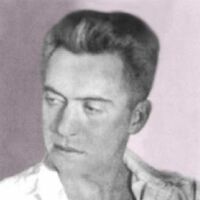
Born on July 21, 1899, in Garrettsville, Ohio, Harold Hart Crane was a highly anxious and volatile child. He began writing verse in his early teenage years, and though he never attended college, read regularly on his own, digesting the works of the Elizabethan dramatists and poets—Shakespeare, Marlowe, and Donne—and the nineteenth-century French poets—Vildrac, Laforgue, and Rimbaud. His father, a candy manufacturer, attempted to dissuade him from a career in poetry, but Crane was determined to follow his passion to write. Living in New York City, he associated with many important figures in literature of the time, including Allen Tate, Katherine Anne Porter, E. E. Cummings, and Jean Toomer, but his heavy drinking and chronic instability frustrated any attempts at lasting friendship. An admirer of T. S. Eliot, Crane combined the influences of European literature and traditional versification with a particularly American sensibility derived from Walt Whitman. His major work, the book-length poem, The Bridge, expresses in ecstatic terms a vision of the historical and spiritual significance of America. Like Eliot, Crane used the landscape of the modern, industrialized city to create a powerful new symbolic literature. Hart Crane committed suicide in 1932, at the age of thirty-three, by jumping from the deck of a steamship sailing back to New York from Mexico. A SELECTED BIBLIOGRAPHY Poetry The Complete Poems and Selected Letters and Prose (1966) The Bridge (1930) White Buildings (1926) Prose Letters (1952) References Poets.org – http://www.poets.org/poet.php/prmPID/233
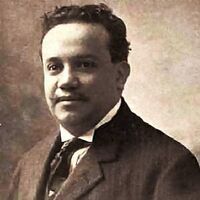
Luis Gonzaga Urbina fue un escritor mexicano. Figura entre los grandes poetas mexicanos por su calidad estética, madurez, y por haber incursionado en la transición entre el romanticismo y el modernismo. Cuando residió en el extranjero, fue nombrado miembro correspondiente de la Academia Mexicana de la Lengua. Nacido en 1864 y no en 1868, como se dice a menudo)2 en la Ciudad de México y fallecido en Madrid, España, el 18 de noviembre de 1934. Su nombre suele escribirse como LUIS G. URBINA, y en las listas se alfabetiza siempre por el apellido Urbina. Estudió en la Escuela Nacional Preparatoria. Se relacionó con el poeta modernista Manuel Gutiérrez Nájera y con Justo Sierra, con quien trabajó en la Secretaría de Instrucción Pública. Se dedicó a la docencia y a la crítica teatral y musical para diversos periódicos. Durante la Revolución mexicana se trasladó a La Habana y a Madrid, donde murió, viajando también a Buenos Aires y a Italia. Las contradicciones sobre su año de nacimiento son un anuncio de lo poco que se sabe de su infancia. Seguramente fue menesterosa, dada su orfandad, la urgencia con la que empezó a trabajar siendo muy joven, y las condiciones de vida durante el porfiriato. Tras cursar estudios en la Escuela Nacional Preparatoria de México, e iniciarse con cierta precocidad en el periodismo como redactor de El Siglo XIX, Justo Sierra, Ministro de Instrucción Pública durante el porfiriato, se fijó en él y lo apadrinó tanto en la vida cultural como en la función pública, nombrándolo su secretario personal. De esa época data también su relación con Manuel Gutiérrez Nájera, la otra persona de mayor influencia en su obra. Fue maestro, llegando a ejercer la cátedra de literatura española en la Escuela Nacional Preparatoria y en la de Escuela Nacional de Altos Estudios; periodista autor de celebradas crónicas, y también crítico de música y teatro en diarios y revistas como El Mundo Ilustrado, la Revista de Revistas o El Imparcial, del que llegó a editorialista hacia 1911. También escribió en colaboración antologías y ensayos sobre la literatura mexicana, destacando la Antología del centenario, de 1910 (centenario del grito de Dolores, de 1810, que inició la Independencia), escrita en colaboración con Pedro Henríquez Ureña y el historiador Nicolás Rangel, bajo la dirección de Sierra. Colaboraba también en la mítica revista Azul, divulgadora del modernismo americano, fundada por Manuel Gutiérrez Nájera. Pero si se lo sigue recordando es sin duda por su obra poética original, elegante y emotiva. En 1913 fue nombrado director de la Biblioteca Nacional de México, cargo que funge hasta 1915. Se recuerda el atinado informe que entregó al gobierno a los cuatro meses de dirigir la biblioteca, reportando la desastrosa situación en la que se le entregó el centro. También fue notorio su éxito en la conservación de las Biblias, muy amenazadas a su llegada. Cuando en agosto de 1915 las fuerzas revolucionarias tomaron la Ciudad de México, y Álvaro Obregón asumió la presidencia, Urbina abandonó el país, no conforme con la revolución constitucionalista, exiliándose en La Habana. Urbina había cometido un error político en la turbulencia revolucionaria, apoyando en 1913, desde su tribuna de El Imparcial, a Victoriano Huerta. En Cuba, como antes en su país, ejerció la docencia y el periodismo. En 1916, su periódico, El Heraldo de la Habana, lo envía como corresponsal a Madrid. En esos años, un buen número de mexicanos ilustres vivieron en Madrid, ya fuera por estudios o exiliados por la Revolución: Alfonso Reyes, Martín Luis Guzmán, Diego Rivera o Ángel Zárraga eran compatriotas vecinos de Urbina.6 Seguirá en Madrid hasta su muerte, salvo intervalos de viajes, de los que los más importantes lo llevaron a Buenos Aires, entre abril y agosto de 1917, a Italia, a comienzos de 1920, y a un frustrado regreso a México en ese mismo año. Muy fructiferó resulta el viaje a Argentina. En la Universidad de Buenos Aires dicta un ciclo de conferencias sobre literatura mexicana, que luego se publica como La vida literaria de México y La literatura mexicana durante la Independencia. En 1918, de vuelta en Madrid, es nombrado primer secretario de la embajada de México en España, cargo que ocupará hasta 1920, año en el que viaja a Italia y regresa después a México. En México es nombrado secretario del Museo Nacional de Arqueología, Etnografía e Historia. Pero el 21 de mayo de 1920 el asesinato de Venustiano Carranza en Tlaxcalantongo, Puebla, vuelve a sacudir a la sociedad mexicana de forma no grata para Urbina, que regresa a Madrid. Nuevamente se le conceden cargos oficiales, esta vez en la comisión "Del Paso y Troncoso", primero como secretario (sucediendo a Alfonso Reyes) y después, desde 1926, como encargado. Murió el 18 de noviembre de 1934. Su cadáver fue inmediatamente reclamado por las autoridades mexicanas, y en diciembre del mismo año entraba en Veracruz. Está enterrado en la Rotonda de las Personas Ilustres de Ciudad de México. Su obra puede bifurcarse en tres ramas: la primera está formada por las críticas musi cales y teatrales dispersas en los medios de la época, si bien se han hecho recopilaciones, y por las crónicas periodísticas que él mismo dio a veces a la imprenta; el segundo son los trabajos académicos de historia de la literatura, que se plasmaron en libros y textos de conferencias. Pero se sigue recordando y leyendo sobre todo al Luis G. Urbina poeta. Obra como cronista En 1929, la Enciclopedia Espasa alababa las crónicas del por entonces madrileño Urbina, calificándolo de sobresaliente en ese género, por saber conjugar un estilo elegante con recursos humorísticos y frívolos, y ser capaz además de hacerlo en una amplia variedad de temas. El mismo Urbina definía la crónica como la capacidad de basarse en hechos reales para hacer con ellos "pirotecnias", "fuentes luminosas", "mágicas y giratorias geometrías”. Como cronista publicó: * Cuentos vividos y crónicas soñadas (México, 1915) * Bajo el sol y frente al mar, impresiones de Cuba (Madrid, 1916) * Estampas de viaje: España en los días de la guerra (1920) * Luces de España (1924) * ... y toda su obra periodística, dispersa en muchos medios, entre otros El siglo XIX, Revista Azul, El Imparcial, Revista de Revistas, El Mundo Ilustrado, El Heraldo de la Habana, Juventud Literaria, El Partido Liberal, Lira Mexicana... Obra académica sobre literatura En cuanto a los trabajos académicos, en 1910 redactó la Introducción a la Antología del centenario, reputada como demostración de su competencia como crítico y estudioso de la literatura. Posteriormente, en todas las etapas de su vida, publicó textos de sus clases y conferencias y libros de literatura mexicana, seguramente concebidos desde la docencia en la Escuela Nacional Preparatoria, en la de Altos Estudios, y luego en La Habana. De igual forma, contribuyó con textos introductorios a los escritos de grandes intelectuales dentro de las antologías editadas en la Colección Cvltvra de Agustín Loera y Chávez y de Julio Torri publicadas a partir de 1916 por la casa editorial Cvltvra. Obras del Urbina académico son: * Antología del centenario (México, 1910, en colaboración con Pedro Henríquez Ureña y Nicolás Rangel) * La literatura mexicana (conferencia, México 1913) * El teatro nacional (1914) * La literatura mexicana durante la guerra de la Independencia (Madrid, 1917) * La vida literaria de México (Madrid, 1917) * Antología romántica 1887-1917 (Madrid, 1917) Obra poética La incertidumbre de su adscripción, entre el romanticismo y el modernismo, define un estilo propio que puede calificarse de romanticismo "contenido" o "pudoroso" si se quiere poner de relieve la distancia que lo separa de los excesos de sensibilidad de los románticos, a veces en las lindes de lo pueril. Pero también se lo puede llamar modernista "sobrio", por cuanto no participa de la exuberante riqueza de vocabulario ni de las extravagancias de sonidos e imágenes de las que se quejaba su contemporáneo y compatriota Enrique González Martínez, al reclamar que se le torciera el cuello al cisne, de engañoso plumaje. Urbina mismo interpretó su falta de adaptación a ambas corrientes como causa de soledad, o rechazo: "Los modernistas no me reputan como suyo" —dijo— "porque me consideran romántico; los románticos no me tienen como suyo, porque me encuentran modernista” Como ocurre con otros poetas de la época, como el mismo Amado Nervo, la obra de Urbina gozó de gran éxito popular en su tiempo, y tal vez medio siglo más, para luego perder algo de vigor y verse sometida a críticas más severas. La historia del cautivo beso enamorado de una mano de nieve de su poema Metamorfosis sigue estando entre los textos más memorizados y declamados en México, y ninguna antología de la literatura hispanoamericana debería carecer de una selección de poemas de Urbina. Alfonso Reyes lo tenía por persona "de rara penetración"; quizá fue esa penetración la que le permitió trasladar a sus versos lo esencial de romanticismo y modernismo, liberándolos con extraño filtro de los excesos de ambas corrientes. La crítica no olvida, sin embargo, sus reiteraciones un poco cansinas de los temas tratados, su estrecho repertorio léxico y su tono en general "menor", aunque emotivo y sentimental. Los libros de poemas que suelen citarse son: * Versos (México, 1890) * Ingenuas (París, 1910) * Puestas de sol (1910) * Lámparas en agonía (México, 1914) * El poema de Mariel (1915) * Glosario de la vida vulgar (Madrid, 1916) * El corazón juglar (1920) * Cancionero de la noche serena (1941) Referencias Wikipedia - http://es.wikipedia.org/wiki/Luis_Gonzaga_Urbina
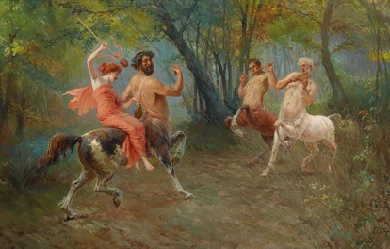
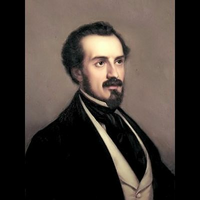
Giuseppe Giusti (Monsummano Terme, 13 maggio 1809 – Firenze, 31 marzo 1850) fu un poeta italiano del XIX secolo, vissuto nel periodo risorgimentale. Appartenente ad una ricca famiglia di proprietari terrieri, era figlio di Domenico Giusti e di Ester Chiti. Dai sette ai dodici anni fu affidato, per essere istruito, alle cure di Don Antonio Sacchi, ma non ne ricavò nulla di buono: «Avevo sett’anni [...] stetti cinque anni con lui, e ne riportai parecchie nerbate e una perfetta conoscenza dell’ortografia, nessuna ombra del latino [...] pochi barlumi di storia non insegnata; e poi svogliatezza, stizza, noia, persuasione interna di non essere buono a nulla».

Welcome to my Poeticous page, I've been writing since I was 13 but in the past 5 years have fallen back in love with writing since studying English at college. I'm currently in the process of adding my work which is often inspired my prompts communities online. I hope you enjoy my words

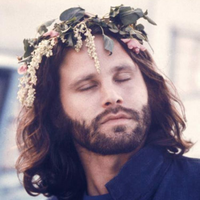
James Douglas “Jim” Morrison (December 8, 1943– July 3, 1971) was an American singer, songwriter, and poet, best remembered as the lead singer of The Doors. As a result of his lyrics, wild personality, performances, and the dramatic circumstances surrounding his life and death, Morrison is regarded by critics and fans as one of the most iconic and influential frontmen in rock music history. In the later part of the 20th century, his fame endured as one of the popular culture’s most rebellious and oft-displayed icons, representing the generation gap and youth counterculture. He was also well known for improvising spoken word poetry passages while the band played live. Morrison was ranked number 47 on Rolling Stone’s list of the "100 Greatest Singers of All Time", and number 22 on Classic Rock magazine’s "50 Greatest Singers In Rock". Ray Manzarek, who co-founded the Doors with him, said Morrison “embodied hippie counterculture rebellion”. Morrison was sometimes referred to by other nicknames, such as “Lizard King” and “King of Orgasmic Rock”. Morrison developed an alcohol dependency during the 1960s, which at times affected his performances on stage. He died at the age of 27 in Paris, possibly from an accidental heroin overdose. As no autopsy was performed, the exact cause of Morrison’s death is still disputed. Morrison is interred at Père Lachaise Cemetery in eastern Paris. Early years James Douglas Morrison was born in Melbourne, Florida, the son of Clara Virginia (née Clarke) and Rear Admiral George Stephen Morrison, USN, who commanded US naval forces during the Gulf of Tonkin incident, which provided the pretext for the US invasion of South Vietnam in 1965. Morrison had a sister, Anne Robin, who was born in 1947 in Albuquerque, New Mexico; and a brother, Andrew Lee Morrison, who was born in 1948 in Los Altos, California. His ancestors were Scottish, Irish, and English. In 1947, Morrison, then four years old, allegedly witnessed a car accident in the desert, in which a family of Native Americans were injured and possibly killed. He referred to this incident in the Doors’ song “Peace Frog” on the 1970 album Morrison Hotel, as well as in the spoken word performances “Dawn’s Highway” and “Ghost Song” on the posthumous 1978 album An American Prayer. Morrison believed this incident to be the most formative event of his life, and made repeated references to it in the imagery in his songs, poems, and interviews. His family does not recall this incident happening in the way he told it. According to the Morrison biography No One Here Gets Out Alive, Morrison’s family did drive past a car accident on an Indian reservation when he was a child, and he was very upset by it. The book The Doors, written by the remaining members of the Doors, explains how different Morrison’s account of the incident was from that of his father. This book quotes his father as saying, "We went by several Indians. It did make an impression on him [the young James]. He always thought about that crying Indian." This is contrasted sharply with Morrison’s tale of “Indians scattered all over the highway, bleeding to death.” In the same book, his sister is quoted as saying, “He enjoyed telling that story and exaggerating it. He said he saw a dead Indian by the side of the road, and I don’t even know if that’s true.” Raised a military brat, Morrison’s family moved often. He spent part of his childhood in San Diego. He completed third grade at a Fairfax County Elementary School Fairfax County, Virginia. His father was stationed at NAS Kingsville in 1952, he attended Charles H. Flato Elementary School in Kingsville, Texas. He continued at St. John’s Methodist School in Albuquerque, New Mexico, and then Longfellow School Sixth Grade Graduation Program from San Diego, California. In 1957, Morrison attended Alameda High School in Alameda, California. He graduated from George Washington High School, now George Washington Middle School, in Alexandria, Virginia in June 1961. Cass Elliot also attended high school there, that same year. Morrison read widely and voraciously—being particularly inspired by the writings of philosophers and poets. He was influenced by Friedrich Nietzsche, whose views on aesthetics, morality, and the Apollonian and Dionysian duality would appear in his conversation, poetry and songs. He read Plutarch’s “Lives of the Noble Greeks and Romans”. He read the works of the French Symbolist poet Arthur Rimbaud, whose style would later influence the form of Morrison’s short prose poems. He was also influenced by William S. Burroughs, Jack Kerouac, Allen Ginsberg, Lawrence Ferlinghetti, Charles Baudelaire, Molière, Franz Kafka, Honoré de Balzac and Jean Cocteau, along with most of the French existentialist philosophers. His senior-year English teacher said, “Jim read as much and probably more than any student in class, but everything he read was so offbeat I had another teacher (who was going to the Library of Congress) check to see if the books Jim was reporting on actually existed. I suspected he was making them up, as they were English books on sixteenth– and seventeenth-century demonology. I’d never heard of them, but they existed, and I’m convinced from the paper he wrote that he read them, and the Library of Congress would’ve been the only source.” Morrison went to live with his paternal grandparents in Clearwater, Florida, where he attended classes at St. Petersburg College (then known as a junior college). In 1962, he transferred to Florida State University (FSU) in Tallahassee, where he appeared in a school recruitment film. While attending FSU, Morrison was arrested for a prank following a home football game. In January 1964, Morrison moved to Los Angeles to attend the University of California, Los Angeles (UCLA). Shortly thereafter on August 2, 1964, Morrison’s father, George Stephen Morrison, commanded a carrier division of the United States fleet during the Gulf of Tonkin Incident, which resulted in the United States’ rapid escalation of the Vietnam War. At UCLA, Morrison enrolled in Jack Hirschman’s class on Antonin Artaud in the Comparative Literature program within the UCLA English Department. Artaud’s brand of surrealist theatre had a profound impact on Morrison’s dark poetic sensibility of cinematic theatricality. Morrison completed his undergraduate degree at UCLA’s film school within the Theater Arts department of the College of Fine Arts in 1965. At the time of graduation ceremony, he went to Venice, and his diploma was mailed to his mother at Coronado. He made several short films while attending UCLA. First Love, the first of these films, made with Morrison’s classmate and roommate Max Schwartz, was released to the public when it appeared in a documentary about the film Obscura. During these years, while living in Venice Beach, he became friends with writers at the Los Angeles Free Press, for which he advocated until his death in 1971. He conducted a lengthy and in-depth interview with Bob Chorush and Andy Kent, both working for the Free Press at the time (approximately December 6–8, 1970), and was planning on visiting the headquarters of the busy newspaper shortly before leaving for Paris. The Doors In the summer of 1965, after graduating with a bachelor’s degree from the UCLA film school, Morrison led a bohemian lifestyle in Venice Beach. Living on the rooftop of a building inhabited by his old UCLA cinematography friend, Dennis Jakobs, he wrote the lyrics of many of the early songs the Doors would later perform live and record on albums, the most notable being “Moonlight Drive” and “Hello, I Love You”. According to Jakobs, he lived on canned beans and LSD for several months. Morrison and fellow UCLA student, Ray Manzarek, were the first two members of the Doors, forming the group during that summer. They had met months earlier as cinematography students. The now-legendary story claims that Manzarek was lying on the beach at Venice one day, where he accidentally encountered Morrison. He was impressed with Morrison’s poetic lyrics, claiming that they were “rock group” material. Subsequently, guitarist Robby Krieger and drummer John Densmore joined. Krieger auditioned at Densmore’s recommendation and was then added to the lineup. All three musicians shared a common interest in the Maharishi Mahesh Yogi’s meditation practices at the time, attending scheduled classes, but Morrison was not involved in this series of classes, claiming later that he “did not meditate.” The Doors took their name from the title of Aldous Huxley’s book The Doors of Perception (a reference to the unlocking of doors of perception through psychedelic drug use). Huxley’s own title was a quotation from William Blake’s The Marriage of Heaven and Hell, in which Blake wrote: “If the doors of perception were cleansed everything would appear to man as it is, infinite.” Although Morrison was known as the lyricist of the group, Krieger also made significant lyrical contributions, writing or co-writing some of the group’s biggest hits, including “Light My Fire”, “Love Me Two Times”, “Love Her Madly”, and “Touch Me”. On the other hand, Morrison, who didn’t write most songs using an instrument, would come up with vocal melodies for his own lyrics, with the other band members contributing chords and rhythm. Morrison did not play an instrument live (except for maracas and tambourine for most shows, and harmonica on a few occasions) or in the studio (excluding maracas, tambourine, handclaps, and whistling). However, he did play the grand piano on “Orange County Suite” and a Moog synthesizer on “Strange Days”. In June 1966, Morrison and the Doors were the opening act at the Whisky a Go Go in the last week of the residency of Van Morrison’s band Them. Van’s influence on Jim’s developing stage performance was later noted by John Densmore in his book Riders On The Storm: “Jim Morrison learned quickly from his near-namesake’s stagecraft, his apparent recklessness, his air of subdued menace, the way he would improvise poetry to a rock beat, even his habit of crouching down by the bass drum during instrumental breaks.” On the final night, the two Morrisons and their two bands jammed together on “Gloria”. In November 1966, Morrison and the Doors produced a promotional film for “Break on Through (To the Other Side)”, which was their first single release. The film featured the four members of the group playing the song on a darkened set with alternating views and close-ups of the performers while Morrison lip-synched the lyrics. Morrison and the Doors continued to make short music films, including “The Unknown Soldier”, “Moonlight Drive”, and “People Are Strange”. The Doors achieved national recognition after signing with Elektra Records in 1967. The single “Light My Fire” spent three weeks at number one on the Billboard Hot 100 chart in July/August 1967. This was a far cry from the Doors playing warm up for Simon and Garfunkel and playing at a high school as they did in Connecticut that same year. Later, the Doors appeared on The Ed Sullivan Show, a popular Sunday night variety series that had introduced the Beatles and Elvis Presley to the United States. Ed Sullivan requested two songs from the Doors for the show, “People Are Strange” and “Light My Fire”. Sullivan’s censors insisted that the Doors change the lyrics of the song “Light My Fire” from “Girl we couldn’t get much higher” to “Girl we couldn’t get much better” for the television viewers; this was reportedly due to what was perceived as a reference to drugs in the original lyrics. After giving assurances of compliance to the producer in the dressing room, the band agreed, “we’re not changing a word,” and proceeded to sing the song with the original lyrics. Sullivan was not happy and he refused to shake hands with Morrison or any other band member after their performance. Sullivan had a show producer tell the band that they would never appear on The Ed Sullivan Show again. Morrison reportedly said to the producer, in a defiant tone, “Hey man. We just 'did’ the Sullivan Show!” By the release of their second album, Strange Days, the Doors had become one of the most popular rock bands in the United States. Their blend of blues and dark psychedelic rock included a number of original songs and distinctive cover versions, such as their rendition of “Alabama Song”, from Bertolt Brecht and Kurt Weill’s opera, Rise and Fall of the City of Mahagonny. The band also performed a number of extended concept works, including the songs “The End”, “When the Music’s Over”, and “Celebration of the Lizard”. In 1966, photographer Joel Brodsky took a series of black-and-white photos of Morrison, in a photo shoot known as “The Young Lion” photo session. These photographs are considered among the most iconic images of Jim Morrison and are frequently used as covers for compilation albums, books, and other memorabilia of the Doors and Morrison. In late 1967 at an infamous concert in New Haven, Connecticut, he was arrested on stage, an incident that further added to his mystique and emphasized his rebellious image. In 1968, the Doors released their third studio album, Waiting for the Sun. The band performed on July 5 at the Hollywood Bowl, this performance became famous with the DVD: Live at the Hollywood Bowl. It’s also this year that the band played, for the first time, in Europe. Their fourth album, The Soft Parade, was released in 1969. It was the first album where the individual band members were given credit on the inner sleeve for the songs they had written. Previously, each song on their albums had been credited simply to “the Doors”. On September 6 and 7, 1968, the Doors played four performances at the Roundhouse, London, England with Jefferson Airplane which were filmed by Granada for a television documentary The Doors are Open directed by John Sheppard. Around this time, Morrison—who had long been a heavy drinker—started showing up for recording sessions visibly inebriated. He was also frequently late for live performances. By early 1969, the formerly svelte singer had gained weight, grown a beard and mustache, and had begun dressing more casually—abandoning the leather pants and concho belts for slacks, jeans and T-shirts. During a concert of March 1, 1969 at the Dinner Key Auditorium in Miami, Morrison attempted to spark a riot in the audience. He failed, but a warrant for his arrest was issued by the Dade County Police department three days later for indecent exposure. Consequently, many of the Doors’ scheduled concerts were canceled. In September 1970, Morrison was convicted of indecent exposure and profanity. Morrison, who attended the sentencing “in a wool jacket adorned with Indian designs”, silently listened as he was sentenced for six months in prison and had to pay a $500 fine. Morrison remained free on a $50,000 bond. At the sentencing, Judge Murray Goodman told Morrison that he was a “person graced with a talent” admired by many of his peers. In 2007 Florida Governor Charlie Crist suggested the possibility of a posthumous pardon for Morrison, which was announced as successful on December 9, 2010. Drummer John Densmore denied Morrison ever exposed himself on stage that night. Following The Soft Parade, the Doors released Morrison Hotel. After a lengthy break the group reconvened in October 1970 to record what would become their final album with Morrison, titled L.A. Woman. Shortly after the recording sessions for the album began, producer Paul A. Rothchild—who had overseen all of their previous recordings—left the project. Engineer Bruce Botnick took over as producer. Poetry and film Morrison began writing in earnest during his adolescence. At UCLA he studied the related fields of theater, film, and cinematography. He self-published two separate volumes of his poetry in 1969, titled The Lords / Notes on Vision and The New Creatures. The Lords consists primarily of brief descriptions of places, people, events and Morrison’s thoughts on cinema. The New Creatures verses are more poetic in structure, feel and appearance. These two books were later combined into a single volume titled The Lords and The New Creatures. These were the only writings published during Morrison’s lifetime. Morrison befriended Beat poet Michael McClure, who wrote the afterword for Danny Sugerman’s biography of Morrison, No One Here Gets Out Alive. McClure and Morrison reportedly collaborated on a number of unmade film projects, including a film version of McClure’s infamous play The Beard, in which Morrison would have played Billy the Kid. After his death, a further two volumes of Morrison’s poetry were published. The contents of the books were selected and arranged by Morrison’s friend, photographer Frank Lisciandro, and girlfriend Pamela Courson’s parents, who owned the rights to his poetry. The Lost Writings of Jim Morrison Volume I is titled Wilderness, and, upon its release in 1988, became an instant New York Times Bestseller. Volume II, The American Night, released in 1990, was also a success. Morrison recorded his own poetry in a professional sound studio on two separate occasions. The first was in March 1969 in Los Angeles and the second was on December 8, 1970. The latter recording session was attended by Morrison’s personal friends and included a variety of sketch pieces. Some of the segments from the 1969 session were issued on the bootleg album The Lost Paris Tapes and were later used as part of the Doors’ An American Prayer album, released in 1978. The album reached No. 54 on the music charts. Some poetry recorded from the December 1970 session remains unreleased to this day and is in the possession of the Courson family. Morrison’s best-known but seldom seen cinematic endeavor is HWY: An American Pastoral, a project he started in 1969. Morrison financed the venture and formed his own production company in order to maintain complete control of the project. Paul Ferrara, Frank Lisciandro and Babe Hill assisted with the project. Morrison played the main character, a hitchhiker turned killer/car thief. Morrison asked his friend, composer/pianist Fred Myrow, to select the soundtrack for the film. Personal life Morrison’s family Morrison’s early life was the semi-nomadic existence typical of military families. Jerry Hopkins recorded Morrison’s brother, Andy, explaining that his parents had determined never to use physical corporal punishment such as spanking on their children. They instead instilled discipline and levied punishment by the military tradition known as dressing down. This consisted of yelling at and berating the children until they were reduced to tears and acknowledged their failings. Once Morrison graduated from UCLA, he broke off most contact with his family. By the time Morrison’s music ascended to the top of the charts (in 1967) he had not been in communication with his family for more than a year and falsely claimed that his parents and siblings were dead (or claiming, as it has been widely misreported, that he was an only child). This misinformation was published as part of the materials distributed with the Doors’ self-titled debut album. Admiral Morrison was not supportive of his son’s career choice in music. One day, an acquaintance brought over a record thought to have Jim on the cover. The record was the Doors’ self-titled debut. The young man played the record for Morrison’s father and family. Upon hearing the record, Morrison’s father wrote him a letter telling him “to give up any idea of singing or any connection with a music group because of what I consider to be a complete lack of talent in this direction.” In a letter to the Florida Probation and Parole Commission District Office dated October 2, 1970, Morrison’s father acknowledged the breakdown in family communications as the result of an argument over his assessment of his son’s musical talents. He said he could not blame his son for being reluctant to initiate contact and that he was proud of him nonetheless. Morrison spoke fondly of his Irish and Scottish ancestry and was inspired by Celtic mythology in his poetry and songs. Celtic Family Magazine revealed in their 2016 Spring Issue his Morrison clan was originally from the Isle of Lewis, Scotland, while his Irish side, the Clelland clan whom married into the Morrison line were from County Down, Ireland. Relationships Morrison’s first major love affair was with Mary Werbelow, whom he met on the beach in Florida. The relationship lasted several years inspiring many of the songs on the first two Doors albums including the 11-minute ballad “The End” which Ray Manzarek said was originally “a short goodbye love song to Mary” calling her “Jim’s first love”. Werbelow has remained out of view to rock historians with one exception, a 2005 interview in the St. Petersburg Times where she said Morrison spoke to her before a photo shoot for the Doors’ fourth album and told her the first three albums were about her. Morrison spent nearly the entirety of his adult life with a woman named Pamela Courson after meeting while both attended university. They met before he gained fame or fortune and she encouraged him to develop his poetry. At times, Courson used the surname “Morrison” with his apparent consent, or at least lack of concern. She was buried as Pamela Susan Morrison. After Courson’s death in 1974, and after her parents petitioned the court for inheritance of Morrison’s estate, the probate court in California decided that she and Morrison had once had what qualified as a common-law marriage, despite neither having applied for such status while they were living and common-law marriage not being recognized in California. Morrison’s will lists him as “an unmarried person” but listed Courson as the sole heir. They had previously obtained marriage licenses in Colorado in 1967 and in Los Angeles in 1968. The Doors’ keyboardist Ray Manzarek described Courson as Morrison’s “other half”. Morrison spoke to Courson through his lyrics and his poetry and dedicated his published poetry book The New Creatures to her. Songs like “Love Street”, “Queen of the Highway”, “Blue Sunday", and “Indian Summer” as well as many of his poems were said to be written about her. Morrison also reportedly regularly had sex with fans ("groupies") such as Pamela Des Barres and Josépha Karcz, who wrote a novel about their night together, and had numerous short flings with other musicians, as well as writers and photographers involved in the music business. They included Nico, the singer associated with the Velvet Underground, a one-night stand with singer Grace Slick of Jefferson Airplane, an on-again, off-again relationship with 16 Magazine’s Gloria Stavers as well as an alleged alcohol-fueled encounter with Janis Joplin. Nico also wanted to marry Morrison and they cut their thumbs in the desert with a knife and let their blood mingle. Nico said, “We exchanged blood. I carry his blood inside me.” David Crosby said many years later Morrison treated Joplin meanly at a party at the Calabasas, California, home of John Davidson while Davidson was out of town. She reportedly hit him over the head with a bottle of whiskey in retaliation during a fight in front of witnesses. In 1965, Judy Huddleston met Morrison and claimed she had a four-year on-and-off relationship with him that she chronicled in her book Love Him Madly: An Intimate Memoir of Jim Morrison and an out-of-print book called This is the End My Only Friend: Living & Dying with Jim Morrison, which was updated as Like He Was God. In 1970, Morrison participated in a Celtic Pagan handfasting ceremony with rock critic author Patricia Kennealy. The couple signed a document declaring themselves wed, but none of the necessary paperwork for a legal marriage was filed with the state. Kennealy discussed her experiences with Morrison in her autobiography Strange Days: My Life With and Without Jim Morrison. In an interview reported in the book Rock Wives, Kennealy reveals that she and Jim Morrison were wed, sort of, in a witch ceremony in 1970, but that he turned “really cold” when Kennealy became pregnant—maybe, she speculates, because he had "20 paternity suits pending against him." She was asked if Morrison took the ceremony seriously and she answered “probably not too seriously”. In July 1971, Janet Erwin documented in her journal having dated Morrison during the last few weeks before he traveled to Paris. She wrote the essay “Your Ballroom Days Are Over.” On a couple of their nights together there were strong aftershocks from the 1971 San Fernando earthquake; one aftershock measured 5.0 on the Richter magnitude scale. At the time of Morrison’s death there were at least three paternity actions pending against him, although no claims were made against his estate by any of the putative paternity claimants. One persistent claim of paternity came from Cliff Morrison. Pamela Des Barres later said in her autobiography I’m With The Band: Confessions of a Groupie that Morrison “turned out to be very much a one-woman man”, referring to his relationship with Pamela Courson. Death Morrison joined Courson in Paris in March 1971, at an apartment he had rented on the rue Beautreillis (in the 4th arrondissement of Paris on the Right Bank). In letters he described going for long walks through the city, alone. During this time, Morrison shaved his beard and lost some of the weight he had gained in the previous months. Morrison died on July 3, 1971 at age 27. In the official account of his death, he was found in a Paris apartment bathtub (at 17–19 rue Beautreillis, 4th arrondissement) by Courson. The official cause of death was listed as “heart failure”, although no autopsy was performed. The absence of an autopsy left many questions regarding the cause of Morrison’s death. In Wonderland Avenue, Danny Sugerman discussed his encounter with Courson after she returned to the United States. According to Sugerman’s account, Courson stated that Morrison had died of an accidental heroin overdose, having snorted what he believed to be cocaine. Sugerman added that Courson had given numerous contradictory versions of Morrison’s death, saying at times that she had killed Morrison, or that his death was her fault. Courson’s story of Morrison’s unintentional ingestion of heroin, resulting in an accidental overdose, is supported by the confession of Alain Ronay, who has written that Morrison died of a hemorrhage after snorting Courson’s heroin, and that Courson nodded off instead of phoning for medical help, leaving Morrison alone and bleeding to death. Ronay confessed in an article in Paris that he then helped cover up the circumstances of Morrison’s death, and that there was no autopsy– the normal procedure when a young person dies suddenly– due to the medical examiner being bribed. In the epilogue of No One Here Gets Out Alive, Hopkins and Sugerman write that Ronay and Agnès Varda say Courson lied to the police who responded to the death scene, and later in her deposition, telling them Morrison never took drugs. She also claimed that she was Morrison’s cousin. In the epilogue to No One Here Gets Out Alive, Hopkins says that 20 years after Morrison’s death, Ronay and Varda broke their silence and gave this account “they arrived at the house shortly after Morrison’s death and Courson said that she and Morrison had taken heroin after a night of drinking. Morrison had been coughing badly, had gone to take a bath, and vomited blood.” Courson said that he appeared to recover and that she then went to sleep. When she awoke sometime later Morrison was unresponsive, so she called local friends. Hopkins and Sugerman also claim that Morrison had asthma and was suffering from a respiratory condition involving a chronic cough and vomiting blood on the night of his death. This theory is partially supported in The Doors (written by the remaining members of the band) in which they claim Morrison had been coughing up blood for nearly two months in Paris, but none of the members of the Doors were in Paris with Morrison in the months prior to his death. No other friends have reported witnessing Morrison coughing. According to a Madame Colinette, who was at Père Lachaise Cemetery mourning the recent loss of her husband, she witnessed Morrison’s funeral. The ceremony was “pitiful,” with several of the attendants muttering a few words, throwing a few flowers over the casket, then leaving quickly and hastily within minutes as if their lives depended upon it. Those who attended included Alain Ronay, Agnès Varda, Bill Siddons (manager), Courson, and Robin Wertle (Morrison’s Canadian private secretary at the time for a few months). In the first version of No One Here Gets Out Alive, published in 1980, Sugerman and Hopkins gave some credence to the rumor that Morrison may not have died at all, calling the fake death theory “not as far-fetched as it might seem”. This theory led to considerable distress for Morrison’s loved ones over the years, notably when fans would stalk them, searching for evidence of Morrison’s whereabouts. No proof of any kind has ever been offered to substantiate Sugerman’s suggestion that Morrison was still alive. In 1995, a new epilogue was added to Sugerman’s and Hopkins’s book, giving new facts about Morrison’s death and discounting the fake death theory saying “As time passed, some of Jim and Pamela [Courson]'s friends began to talk about what they knew, and although everything they said pointed irrefutably to Jim’s demise, there remained and probably always will be those who refuse to believe that Jim is dead and those who will not allow him to rest in peace.” In 2007, Sam Bernett, a former manager of the Rock 'n’ Roll Circus nightclub, released a (French) book titled “The End: Jim Morrison”, alleging that Morrison overdosed on heroin in his nightclub. He claims that Morrison went to the club to buy heroin for Courson, used some himself and died in the bathroom, and that his body was then moved by Patrick Chauvel, who corroborates the move, along with two unidentified drug dealers, nicknamed ‘Le Chinois’ and ‘Le Petit Robert’ out the back of the Nightclub so as to prevent a scandal and then bundled into a taxi with the two dealers, which then drove to Morrison’s rue Beautrellis apartment. Apart from Chauvel, one of the other patrons at the club who state that they helped move Morrison was interviewed in the documentary Rock Poet: Jim Morrison (2010). According to Bernett, the heroin was ultimately supplied by the aristocrat Jean de Breiteuil. In 2014, Marianne Faithfull claimed that her boyfriend, de Breiteuil, received a late-night phone call and he alone rushed over to Morrison’s apartment on the day of his death. Near the end of an 1986 audio interview, with radio host Roger Steffens and Doors drummer John Densmore. Steffens recounts that he had been told two days after Morrison’s death, by a shaking Marianne Faithfull and her lover Jean de Breiteuil in Marrakesh of the details of Morrison’s demise, with both Faithfull and Breiteuil having been in Morrison’s apartment after his return from the nightclub and seeing him dead in the bathroom, a scene which motivated them to quickly flee the country, flying to Tangier the next day and then on to Marrakesh, where Steffens happened to be living in 1971. Faithfull would consistently decline to comment on this thereafter until 2014. Steffens remarked that he found it amazing how Faithfull had never publicly discussed the tragedy from 1971 up to the time of recording, 1986. As early as the 1990s, Cameron Watson, an American working as a DJ in Paris at that time, would give the account that while working in the Parisian nightclub La Bulle in July 1971, two “well dressed” drug dealers arrived in the early morning hours at the club and told him that Jim Morrison had just died, Watson then announced this to the few remaining patrons at the club, the first public announcement of his demise and which contributed to the growth of the local parisian rumors. Paris Journal After his death, a notebook of poetry written by Morrison was recovered entitled Paris Journal which amongst other personal details, contains the allegorical foretelling of a man who will be left grieving and having to abandon his belongings, due to a police investigation into a death connected to the Chinese opium trade. Weeping, he left his pad on orders from police & furnishings hauled away, all records & momentos, & reporters calculating tears & curses for the press: “I hope the Chinese junkies get you” & they will for the [opium] poppy rules the world. The concluding stanzas of this poem end with conveying a disappointment for someone who he had an intimate relationship with and a further invocation of Billy/the killer Hitchhiker, a common character in Morrison’s body of work. This is my poem for you, Great flowing funky flower’d beast, Great perfumed wreck of hell... Someone new in your knickers & who would that be? You know, You know more, than you let on... Tell them you came & saw & look’d into my eyes & saw the shadow of the guard receding, Thoughts in time & out of season The Hitchiker stood by the side of the road & levelled his thumb in the calm calculus of reason. In 2013 another of Morrison’s notebooks from Paris, found alongside the Paris Journal in the same box, known as the 127 Fascination box, sold for $250,000. at auction. This box of personal belongings similarly contained a home movie of Pamela Courson, the only film so far recovered, to be shot by Morrison. The box also housed a number of older notebooks and journals and may have potentially included the “Steno Pad” and falsely titled “The Lost Paris Tapes” if they had not been separated from the primary collection and sold by Philippe Dalecky with this promotional title. This tape was later determined by avid listeners to be largely of Jomo & The Smoothies recordings of Morrison, friends and producer Paul Rothchild loose jamming in Los Angeles well before 1971. Grave site Morrison was buried in Père Lachaise Cemetery in Paris, one of the city’s most visited tourist attractions. The grave had no official marker until French officials placed a shield over it, which was stolen in 1973. The grave was listed in the cemetery directory with Morrison’s name incorrectly rearranged as “Douglas James Morrison.” In 1981, Croatian sculptor Mladen Mikulin voluntarily placed a bust of his own design and a new gravestone with Morrison’s name at the grave to commemorate the 10th anniversary of his death; the bust was defaced through the years by cemetery vandals and later stolen in 1988. Mikulin made another bust of Morrison in 1989, and a bronze portrait of him in 2001; neither piece is at the gravesite. In the early 1990s, Morrison’s father, George Stephen Morrison, after consulting with E. Nicholas Genovese, professor of classics and humanities, San Diego State University, placed a flat stone on the grave. The bronze plaque thereon bears the Greek inscription: ΚΑΤΑ ΤΟΝ ΔΑΙΜΟΝΑ ΕΑΥΤΟΥ, literally meaning “according to his own daemon, i.e., guiding spirit,” to convey the sentiment “True to Himself.” Artistic influences As a naval family the Morrisons relocated frequently. Consequently, Morrison’s early education was routinely disrupted as he moved from school to school. Nonetheless he was drawn to the study of literature, poetry, religion, philosophy and psychology, among other fields. Biographers have consistently pointed to a number of writers and philosophers who influenced Morrison’s thinking and, perhaps, his behavior. While still in his teens Morrison discovered the work of philosopher Friedrich Nietzsche. He was also drawn to the poetry of William Blake, Charles Baudelaire and Arthur Rimbaud. Beat Generation writers such as Jack Kerouac also had a strong influence on Morrison’s outlook and manner of expression; Morrison was eager to experience the life described in Kerouac’s On the Road. He was similarly drawn to the work of French writer Louis-Ferdinand Céline. Céline’s book, Voyage au Bout de la Nuit (Journey to the End of the Night) and Blake’s Auguries of Innocence both echo through one of Morrison’s early songs, “End of the Night”. Morrison later met and befriended Michael McClure, a well known beat poet. McClure had enjoyed Morrison’s lyrics but was even more impressed by his poetry and encouraged him to further develop his craft. Morrison’s vision of performance was colored by the works of 20th-century French playwright Antonin Artaud (author of Theater and its Double) and by Julian Beck’s Living Theater. Other works relating to religion, mysticism, ancient myth and symbolism were of lasting interest, particularly Joseph Campbell’s The Hero with a Thousand Faces. James Frazer’s The Golden Bough also became a source of inspiration and is reflected in the title and lyrics of the song “Not to Touch the Earth”. Morrison was particularly attracted to the myths and religions of Native American cultures. While he was still in school, his family moved to New Mexico where he got to see some of the places and artifacts important to the American Southwest Indigenous cultures. These interests appear to be the source of many references to creatures and places such as lizards, snakes, deserts and “ancient lakes” that appear in his songs and poetry. His interpretation and imagination of the practices of Native American ceremonial people (which, based on his readings, he referred to by the anthropological but inaccurate term “shamans”) influenced his stage routine, notably in seeking trance states and vision through dancing to the point of exhaustion. In particular, Morrison’s poem “The Ghost Song” was inspired by his readings about the Native American Ghost Dance. Jim Morrison’s vocal influences included Elvis Presley and Frank Sinatra, which is evident in his own baritone crooning style used in several of the Doors’ songs and in the 1981 documentary The Doors: A Tribute to Jim Morrison, producer Paul Rothchild refers his first impression of Morrison as being a “Rock and Roll Bing Crosby”. It is mentioned within the pages of No One Here Gets Out Alive by Danny Sugerman, that Morrison as a teenager was such a fan of Presley’s music that he demanded people be quiet when Elvis was on the radio. The Frank Sinatra influence is mentioned in the pages of The Doors, The Illustrated History also by Sugerman, where Frank Sinatra is listed on Morrison’s Band Bio as being his favorite singer. Reference to this can also be found in a Rolling Stone article about Jim Morrison, regarding the Top 100 rock singers of all time. Legacy Musical Morrison was, and continues to be, one of the most popular and influential singer-songwriters and iconic front men in rock history. To this day Morrison is widely regarded as the prototypical rock-star: surly, sexy, scandalous, and mysterious. The leather pants he was fond of wearing both onstage and off have since become stereotyped as rock-star apparel. In 2011, a Rolling Stone readers’ pick placed Jim Morrison in fifth place of the magazine’s “Best Lead Singers of All Time”. Iggy and the Stooges are said to have formed after lead singer Iggy Pop was inspired by Morrison while attending a Doors concert in Ann Arbor, Michigan. One of Pop’s most popular songs, “The Passenger”, is said to be based on one of Morrison’s poems. After Morrison’s death, Pop was considered as a replacement lead singer for the Doors; the surviving Doors gave him some of Morrison’s belongings and hired him as a vocalist for a series of shows. Wallace Fowlie, professor emeritus of French literature at Duke University, wrote Rimbaud and Jim Morrison, subtitled “The Rebel as Poet– A Memoir”. In this he recounts his surprise at receiving a fan letter from Morrison who, in 1968, thanked him for his latest translation of Arthur Rimbaud’s verse into English. “I don’t read French easily”, he wrote, “...your book travels around with me.” Fowlie went on to give lectures on numerous campuses comparing the lives, philosophies and poetry of Morrison and Rimbaud. The book The Doors by the remaining Doors quotes Morrison’s close friend Frank Lisciandro as saying that too many people took a remark of Morrison’s that he was interested in revolt, disorder, and chaos “to mean that he was an anarchist, a revolutionary, or, worse yet, a nihilist. Hardly anyone noticed that Jim was paraphrasing Rimbaud and the Surrealist poets.” Layne Staley, the vocalist of Alice in Chains, Eddie Vedder, the vocalist of Pearl Jam, Scott Weiland, the vocalist of Stone Temple Pilots and Velvet Revolver, Julian Casablancas of the Strokes, James LaBrie of Dream Theater, as well as Scott Stapp of Creed and Ville Valo of H.I.M., have all said that Morrison was their biggest influence and inspiration. Stone Temple Pilots and Velvet Revolver have both covered “Roadhouse Blues” by the Doors. Weiland also filled in for Morrison to perform “Break On Through (To The Other Side)” with the rest of the Doors. Stapp filled in for Morrison for “Light My Fire”, “Riders on the Storm” and “Roadhouse Blues” on VH1 Storytellers. Creed performed their version of “Roadhouse Blues” with Robby Krieger for the 1999 Woodstock Festival. Morrison’s recital of his poem “Bird Of Prey” can be heard throughout the song “Sunset” by Fatboy Slim. Rock band Bon Jovi featured Morrison’s grave in their “I’ll Sleep When I’m Dead” video clip. The band Radiohead mentions Jim Morrison in their song “Anyone Can Play Guitar”, stating “I wanna be wanna be wanna be Jim Morrison”. Alice Cooper in the liner notes of the album Killer stated that the song “Desperado” is about Jim Morrison. The leather pants of U2's Bono’s “The Fly” persona for the Achtung Baby era and subsequent Zoo TV Tour is attributed to Jim Morrison. On their 2008 album The Hawk Is Howling In 2012 electronic music producer Skrillex released “Breakn’ a Sweat” which contained vocals from an interview with Jim Morrison. In popular culture In June 2013, a new fossil analysis revealed a lizard, one of the largest ever known that lived on Myanmar, was given the moniker Barbaturex morrisoni in honor of Morrison. “This is a king lizard, and he was the lizard king, so it just fit,” said Jason Head, a paleontologist at the University of Nebraska-Lincoln. The animated television show The Simpsons has made numerous references to Morrison, including Krusty the Klown singing Break On Through ("I Love Lisa", Season 4); Otto Mann telling Homer that “me and the admiral do not get along” (a reference to Morrison and his estranged father, Rear Admiral George Stephen Morrison ("The Otto Show", Season 3)); mention of Morrison’s grave ("The Devil Wears Nada", Season 21). Another reference, “I am the lizard queen!” Is bellowed by Lisa Simpson at the end of her encounter with psychedelic theme-ride river water at Duff Gardens ("Selma’s Choice", Season 4). In another episode, Morrison himself was visually depicted in the form of a hallucination had by Homer Simpson when he was forming a rock band ("Covercraft", Season 26) In Stephen King’s The Stand, Stu Redman tells a friend about his encounter with Jim Morrison long after Morrison’s supposed death, late at night at a lonely Texas gas station in the 1980s. Discography Books By Morrison * The Lords and the New Creatures (1969). 1985 edition: ISBN 0-7119-0552-5 * An American Prayer (1970) privately printed by Western Lithographers. (Unauthorized edition also published in 1983, Zeppelin Publishing Company, ISBN 0-915628-46-5. The authenticity of the unauthorized edition has been disputed.) * Arden lointain, edition bilingue (1988), trad. de l’américain et présenté par Sabine Prudent et Werner Reimann. [Paris]: C. Bourgois. 157 p. N.B.: Original texts in English, with French translations, on facing pages. ISBN 2-267-00560-3 * Wilderness: The Lost Writings Of Jim Morrison (1988). 1990 edition: ISBN 0-14-011910-8 * The American Night: The Writings of Jim Morrison (1990). 1991 edition: ISBN 0-670-83772-5 About Morrison * Linda Ashcroft, Wild Child: Life with Jim Morrison, (1997) ISBN 1-56025-249-9 * Lester Bangs, “Jim Morrison: Bozo Dionysus a Decade Later” in Main Lines, Blood Feasts, and Bad Taste: A Lester Bangs Reader, John Morthland, ed. Anchor Press (2003) ISBN 0-375-71367-0 * Stephen Davis, Jim Morrison: Life, Death, Legend, (2004) ISBN 1-59240-064-7 * John Densmore, Riders on the Storm: My Life With Jim Morrison and the Doors (1991) ISBN 0-385-30447-1 * Dave DiMartino, Moonlight Drive (1995) ISBN 1-886894-21-3 * Steven Erkel, "The Poet Behind the Doors: Jim Morrison’s Poetry and the 1960s Countercultural Movement" (2011) * Wallace Fowlie, Rimbaud and Jim Morrison (1994) ISBN 0-8223-1442-8 * Jerry Hopkins, The Lizard King: The Essential Jim Morrison (1995) ISBN 0-684-81866-3 * Jerry Hopkins and Danny Sugerman, No One Here Gets Out Alive (1980) ISBN 0-85965-138-X * Mike Jahn, “Jim Morrison and the Doors” (1969)Library of Congress Catalog Card Number 71-84745 * Dylan Jones, Jim Morrison: Dark Star, (1990) ISBN 0-7475-0951-4 * Patricia Kennealy, Strange Days: My Life With and Without Jim Morrison (1992) ISBN 0-525-93419-7 * Gerry Kirstein, “Some Are Born to Endless Night: Jim Morrison, Visions of Apocalypse and Transcendence” (2012) ISBN 1451558066 * Frank Lisciandro, Morrison: A Feast of Friends (1991) ISBN 0-446-39276-6, Morrison—Un festin entre amis (1996) (French) * Frank Lisciandro, Jim Morrison: An Hour For Magic (A Photojournal) (1982) ISBN 0-85965-246-7, James Douglas Morrison (2005) (French) * Ray Manzarek, Light My Fire (1998) ISBN 0-446-60228-0. First by Jerry Hopkins and Danny Sugerman (1981) * Peter Jan Margry, The Pilgrimage to Jim Morrison’s Grave at Père Lachaise Cemetery: The Social Construction of Sacred Space. In idem (ed.), Shrines and Pilgrimage in the Modern World. New Itineraries into the Sacred. Amsterdam University Press, 2008, p. 145–173. * Thanasis Michos, The Poetry of James Douglas Morrison (2001) ISBN 960-7748-23-9 (Greek) * Daveth Milton, We Want The World: Jim Morrison, The Living Theatre, and the FBI, (2012) ISBN 978-0957051188 * Mark Opsasnick, The Lizard King Was Here: The Life and Times of Jim Morrison in Alexandria, Virginia (2006) ISBN 1-4257-1330-0 * James Riordan & Jerry Prochnicky, Break on through: The Life and Death of Jim Morrison (1991) ISBN 0-688-11915-8 * Adriana Rubio, Jim Morrison: Ceremony... Exploring the Shaman Possession (2005) ISBN * Howard Sounes. 27: A History of the 27 Club Through the Lives of Brian Jones, Jimi Hendrix, Janis Joplin, Jim Morrison, Kurt Cobain, and Amy Winehouse, Boston: Da Capo Press, 2013. ISBN 0-306-82168-0. * The Doors (remaining members Ray Manzarek, Robby Krieger, John Densmore) with Ben Fong-Torres, The Doors (2006) ISBN 1-4013-0303-X * Mick Wall, “Love Becomes a Funeral Pyre: A Biography of the Doors”, (2014) Films Films by Morrison * HWY: An American Pastoral Documentaries featuring Morrison Films about The Doors * The Doors (1991), A film by director Oliver Stone, starring Val Kilmer as Morrison and with cameos by Krieger and Densmore. Kilmer’s performance was praised by some critics. Ray Manzarek, The Doors’ keyboardist, harshly criticized Stone’s portrayal of Morrison, and noted that numerous events depicted in the movie were pure fiction. David Crosby on an album by CPR wrote and recorded a song about the movie with the lyric: “And I have seen that movie– and it wasn’t like that.” References Wikipedia—https://en.wikipedia.org/wiki/Jim_Morrison

Musa Gift Masombuka is a poet, author, and a distributor for Samnko Books. Born 1998, April 1st. His works are available on sites such as Fundza; Botsotso Magazine; Poeticous, and PoemHunter. He was nominated Best Poet in the 2014 SATMA Awards. His recently published book MY WORDS IN VOLUMES: Emotions Of A Poet is a prescribed library resource for the Gauteng Education department. He has been featured to do forewords; introductions and typeset on books such as Broken Dreams: The Awakening Past by Edwin Mabodimo Mphaga and Love&Lies: My Past Tense by SamNkogatse. He also had the honour to work with the greatest writers such as Sifiso Mtshali; Tshifhiwa Given Mukwevho, Moses Seletisha and Jayne Bauling. Musa has been a competitive writer, participating in literary competitions organised by Maskew Miller Longman, Jacana Media, Write Associates, Commonwealth Writers and the South Afrian Writers College. His short story titled The Initiation was shortlisted in the South African Writers College Annual Short Story Competition 2017.
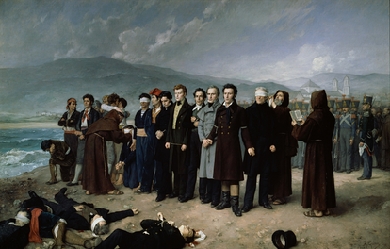
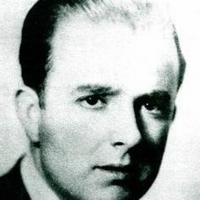
José María Hinojosa Lasarte (Campillos, 1904 - Málaga, 22 de agosto de 1936) fue un poeta español de la Generación del 27, introductor en España de la poesía surrealista. Fue codirector, con Manuel Altolaguirre, de la celebérrima revista Litoral. Perteneciente a una rica familia de hacendados. Murió asesinado al comienzo de la Guerra Civil Española en la puerta del cementerio de San Rafael, de Málaga, víctima de la represión republicana.
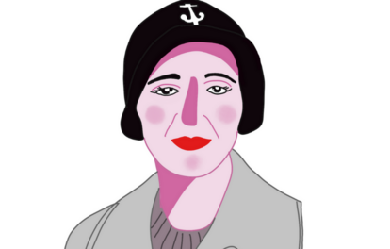
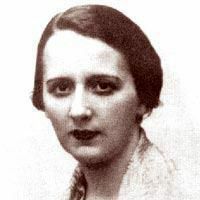
María Zambrano Alarcón (Vélez-Málaga, España, 22 de abril de 1904 – Madrid, 6 de febrero de 1991) fue una filósofa y ensayista, discípula del famoso filósofo José Ortega y Gasset. Nació en Vélez-Málaga el 22 de abril de 1904, hija de Blas Zambrano García de Carabante y Araceli Alarcón Delgado, ambos maestros. En 1908 se traslada con su familia a Madrid, y vive en el Nº 8 de la calle Redondilla. Más tarde, en 1909, la familia se afinca en Segovia donde transcurre su adolescencia.
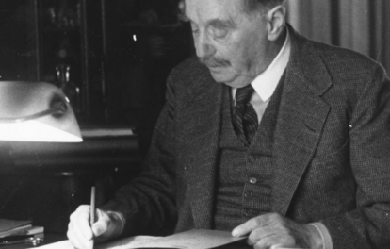
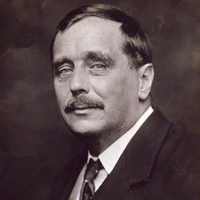
Herbert George Wells (21 September 1866 – 13 August 1946) was an English writer. He was prolific in many genres, writing dozens of novels, short stories, and works of social commentary, history, satire, biography, and autobiography, and even including two books on recreational war games. He is now best remembered for his science fiction novels and is often called the “father of science fiction”, along with Jules Verne and Hugo Gernsback.During his own lifetime, however, he was most prominent as a forward-looking, even prophetic social critic who devoted his literary talents to the development of a progressive vision on a global scale. A futurist, he wrote a number of utopian works and foresaw the advent of aircraft, tanks, space travel, nuclear weapons, satellite television and something resembling the World Wide Web. His science fiction imagined time travel, alien invasion, invisibility, and biological engineering. Brian Aldiss referred to Wells as the “Shakespeare of science fiction”. Wells rendered his works convincing by instilling commonplace detail alongside a single extraordinary assumption – dubbed “Wells’s law” – leading Joseph Conrad to hail him in 1898 as “O Realist of the Fantastic!”. His most notable science fiction works include The Time Machine (1895), The Island of Doctor Moreau (1896), The Invisible Man (1897), The War of the Worlds (1898) and the military science fiction The War in the Air (1907). Wells was nominated for the Nobel Prize in Literature four times.Wells’s earliest specialised training was in biology, and his thinking on ethical matters took place in a specifically and fundamentally Darwinian context. He was also from an early date an outspoken socialist, often (but not always, as at the beginning of the First World War) sympathising with pacifist views. His later works became increasingly political and didactic, and he wrote little science fiction, while he sometimes indicated on official documents that his profession was that of journalist. Novels such as Kipps and The History of Mr Polly, which describe lower-middle-class life, led to the suggestion that he was a worthy successor to Charles Dickens, but Wells described a range of social strata and even attempted, in Tono-Bungay (1909), a diagnosis of English society as a whole. Wells was a diabetic and co-founded the charity The Diabetic Association (known today as Diabetes UK) in 1934. Life Early life Herbert George Wells was born at Atlas House, 162 High Street in Bromley, Kent, on 21 September 1866. Called “Bertie” in the family, he was the fourth and last child of Joseph Wells (a former domestic gardener, and at the time a shopkeeper and professional cricketer) and his wife, Sarah Neal (a former domestic servant). An inheritance had allowed the family to acquire a shop in which they sold china and sporting goods, although it failed to prosper: the stock was old and worn out, and the location was poor. Joseph Wells managed to earn a meagre income, but little of it came from the shop and he received an unsteady amount of money from playing professional cricket for the Kent county team. Payment for skilled bowlers and batsmen came from voluntary donations afterwards, or from small payments from the clubs where matches were played. A defining incident of young Wells’s life was an accident in 1874 that left him bedridden with a broken leg. To pass the time he began to read books from the local library, brought to him by his father. He soon became devoted to the other worlds and lives to which books gave him access; they also stimulated his desire to write. Later that year he entered Thomas Morley’s Commercial Academy, a private school founded in 1849, following the bankruptcy of Morley’s earlier school. The teaching was erratic, the curriculum mostly focused, Wells later said, on producing copperplate handwriting and doing the sort of sums useful to tradesmen. Wells continued at Morley’s Academy until 1880. In 1877, his father, Joseph Wells, suffered a fractured thigh. The accident effectively put an end to Joseph’s career as a cricketer, and his subsequent earnings as a shopkeeper were not enough to compensate for the loss of the primary source of family income. No longer able to support themselves financially, the family instead sought to place their sons as apprentices in various occupations. From 1880 to 1883, Wells had an unhappy apprenticeship as a draper at the Southsea Drapery Emporium, Hyde’s. His experiences at Hyde’s, where he worked a thirteen-hour day and slept in a dormitory with other apprentices, later inspired his novels The Wheels of Chance, The History of Mr Polly, and Kipps, which portray the life of a draper’s apprentice as well as providing a critique of society’s distribution of wealth.Wells’s parents had a turbulent marriage, owing primarily to his mother’s being a Protestant and his father’s being a freethinker. When his mother returned to work as a lady’s maid (at Uppark, a country house in Sussex), one of the conditions of work was that she would not be permitted to have living space for her husband and children. Thereafter, she and Joseph lived separate lives, though they never divorced and remained faithful to each other. As a consequence, Herbert’s personal troubles increased as he subsequently failed as a draper and also, later, as a chemist’s assistant. However, Uppark had a magnificent library in which he immersed himself, reading many classic works, including Plato’s Republic, Thomas More’s Utopia, and the works of Daniel Defoe. This would be the beginning of Wells’s venture into literature. Teacher In October 1879, Wells’s mother arranged through a distant relative, Arthur Williams, for him to join the National School at Wookey in Somerset as a pupil–teacher, a senior pupil who acted as a teacher of younger children. In December that year, however, Williams was dismissed for irregularities in his qualifications and Wells was returned to Uppark. After a short apprenticeship at a chemist in nearby Midhurst and an even shorter stay as a boarder at Midhurst Grammar School, he signed his apprenticeship papers at Hyde’s. In 1883, Wells persuaded his parents to release him from the apprenticeship, taking an opportunity offered by Midhurst Grammar School again to become a pupil–teacher; his proficiency in Latin and science during his earlier short stay had been remembered.The years he spent in Southsea had been the most miserable of his life to that point, but his good fortune at securing a position at Midhurst Grammar School meant that Wells could continue his self-education in earnest. The following year, Wells won a scholarship to the Normal School of Science (later the Royal College of Science in South Kensington, now part of Imperial College London) in London, studying biology under Thomas Henry Huxley. As an alumnus, he later helped to set up the Royal College of Science Association, of which he became the first president in 1909. Wells studied in his new school until 1887, with a weekly allowance of 21 shillings (a guinea) thanks to his scholarship. This ought to have been a comfortable sum of money (at the time many working class families had “round about a pound a week” as their entire household income) yet in his Experiment in Autobiography, Wells speaks of constantly being hungry, and indeed photographs of him at the time show a youth who is very thin and malnourished. He soon entered the Debating Society of the school. These years mark the beginning of his interest in a possible reformation of society. At first approaching the subject through Plato’s Republic, he soon turned to contemporary ideas of socialism as expressed by the recently formed Fabian Society and free lectures delivered at Kelmscott House, the home of William Morris. He was also among the founders of The Science School Journal, a school magazine that allowed him to express his views on literature and society, as well as trying his hand at fiction; a precursor to his novel The Time Machine was published in the journal under the title The Chronic Argonauts. The school year 1886–87 was the last year of his studies.During 1888, Wells stayed in Stoke-on-Trent, living in Basford. The unique environment of The Potteries was certainly an inspiration. He wrote in a letter to a friend from the area that “the district made an immense impression on me.” The inspiration for some of his descriptions in The War of the Worlds is thought to have come from his short time spent here, seeing the iron foundry furnaces burn over the city, shooting huge red light into the skies. His stay in The Potteries also resulted in the macabre short story “The Cone” (1895, contemporaneous with his famous The Time Machine), set in the north of the city.After teaching for some time, he was briefly on the staff of Holt Academy in Wales – Wells found it necessary to supplement his knowledge relating to educational principles and methodology and entered the College of Preceptors (College of Teachers). He later received his Licentiate and Fellowship FCP diplomas from the College. It was not until 1890 that Wells earned a Bachelor of Science degree in zoology from the University of London External Programme. In 1889–90, he managed to find a post as a teacher at Henley House School in London, where he taught A. A. Milne (whose father ran the school). His first published work was a Text-Book of Biology in two volumes (1893).Upon leaving the Normal School of Science, Wells was left without a source of income. His aunt Mary—his father’s sister-in-law—invited him to stay with her for a while, which solved his immediate problem of accommodation. During his stay at his aunt’s residence, he grew increasingly interested in her daughter, Isabel. He would later go on to court her. To earn money, he began writing short humorous articles for journals such as The Pall Mall Gazette, later collecting these in volume form as Select Conversations with an Uncle (1895) and Certain Personal Matters (1897). So prolific did Wells become at this mode of journalism that many of his early pieces remain unidentified. According to David C Smith, "Most of Wells’s occasional pieces have not been collected, and many have not even been identified as his. Wells did not automatically receive the byline his reputation demanded until after 1896 or so... As a result, many of his early pieces are unknown. It is obvious that many early Wells items have been lost." His success with these shorter pieces encouraged him to write book-length work, and he published his first novel, The Time Machine, in 1895. Personal life In 1891, Wells married his cousin Isabel Mary Wells (1865–1931; from 1902 Isabel Mary Smith). The couple agreed to separate in 1894, when he had fallen in love with one of his students, Amy Catherine Robbins (1872–1927; later known as Jane), with whom he moved to Woking, Surrey in May 1895. They lived in a rented house, 'Lynton’, (now No.141) Maybury Road in the town centre for just under 18 months and married at St Pancras register office in October 1895. His short period in Woking was perhaps the most creative and productive of his whole writing career, for while there he planned and wrote The War of the Worlds and The Time Machine, completed The Island of Doctor Moreau, wrote and published The Wonderful Visit and The Wheels of Chance, and began writing two other early books, When the Sleeper Wakes and Love and Mr Lewisham.In late summer 1896, Wells and Jane moved to a larger house in Worcester Park, near Kingston upon Thames, for two years; this lasted until his poor health took them to Sandgate, near Folkestone, where he constructed a large family home, Spade House, in 1901. He had two sons with Jane: George Philip (known as “Gip”; 1901–1985) and Frank Richard (1903–1982). Jane died 6 October 1927, in Dunmow, at the age of 55. Wells had affairs with a significant number of women. In December 1909, he had a daughter, Anna-Jane, with the writer Amber Reeves, whose parents, William and Maud Pember Reeves, he had met through the Fabian Society. Amber had married the barrister G. R. Blanco White in July of that year, as co-arranged by Wells. After Beatrice Webb voiced disapproval of Wells’ “sordid intrigue” with Amber, he responded by lampooning Beatrice Webb and her husband Sidney Webb in his 1911 novel The New Machiavelli as 'Altiora and Oscar Bailey’, a pair of short-sighted, bourgeois manipulators. Between 1910–1913, novelist Elizabeth von Arnim was one of his mistresses. In 1914, he had a son, Anthony West (1914–1987), by the novelist and feminist Rebecca West, 26 years his junior. In 1920–21, and intermittently until his death, he had a love affair with the American birth control activist Margaret Sanger. Between 1924 and 1933 he partnered with the 22-year younger Dutch adventurer and writer Odette Keun, with whom he lived in Lou Pidou, a house they built together in Grasse, France. Wells dedicated his longest book to her (The World of William Clissold, 1926). When visiting Maxim Gorky in Russia 1920, he had slept with Gorky’s mistress Moura Budberg, then still Countess Benckendorf and 27 years his junior. In 1933, when she left Gorky and emigrated to London, their relationship renewed and she cared for him through his final illness. Wells asked her to marry him repeatedly, but Budberg strongly rejected his proposals.In Experiment in Autobiography (1934), Wells wrote: “I was never a great amorist, though I have loved several people very deeply”.David Lodge’s novel A Man of Parts (2011)—a 'narrative based on factual sources’ (author’s note)—gives a convincing and generally sympathetic account of Wells’s relations with the women mentioned above, and others.Director Simon Wells (born 1961), the author’s great-grandson, was a consultant on the future scenes in Back to the Future Part II (1989). Artist One of the ways that Wells expressed himself was through his drawings and sketches. One common location for these was the endpapers and title pages of his own diaries, and they covered a wide variety of topics, from political commentary to his feelings toward his literary contemporaries and his current romantic interests. During his marriage to Amy Catherine, whom he nicknamed Jane, he drew a considerable number of pictures, many of them being overt comments on their marriage. During this period, he called these pictures “picshuas”. These picshuas have been the topic of study by Wells scholars for many years, and in 2006, a book was published on the subject. Writer Some of his early novels, called “scientific romances”, invented several themes now classic in science fiction in such works as The Time Machine, The Island of Doctor Moreau, The Invisible Man, The War of the Worlds, When the Sleeper Wakes, and The First Men in the Moon. He also wrote realistic novels that received critical acclaim, including Kipps and a critique of English culture during the Edwardian period, Tono-Bungay. Wells also wrote dozens of short stories and novellas, including, “The Flowering of the Strange Orchid”, which helped bring the full impact of Darwin’s revolutionary botanical ideas to a wider public, and was followed by many later successes such as “The Country of the Blind” (1904).According to James Gunn, one of Wells’s major contributions to the science fiction genre was his approach, which he referred to as his “new system of ideas”. In his opinion, the author should always strive to make the story as credible as possible, even if both the writer and the reader knew certain elements are impossible, allowing the reader to accept the ideas as something that could really happen, today referred to as “the plausible impossible” and “suspension of disbelief”. While neither invisibility nor time travel was new in speculative fiction, Wells added a sense of realism to the concepts which the readers were not familiar with. He conceived the idea of using a vehicle that allows an operator to travel purposely and selectively forwards or backwards in time. The term “time machine”, coined by Wells, is now almost universally used to refer to such a vehicle. He explained that while writing The Time Machine, he realized that “the more impossible the story I had to tell, the more ordinary must be the setting, and the circumstances in which I now set the Time Traveller were all that I could imagine of solid upper-class comforts.” In “Wells’s Law”, a science fiction story should contain only a single extraordinary assumption. Being aware the notion of magic as something real had disappeared from society, he, therefore, used scientific ideas and theories as a substitute for magic to justify the impossible. Wells’s best-known statement of the “law” appears in his introduction to The Scientific Romances of H. G. Wells (1933), As soon as the magic trick has been done the whole business of the fantasy writer is to keep everything else human and real. Touches of prosaic detail are imperative and a rigorous adherence to the hypothesis. Any extra fantasy outside the cardinal assumption immediately gives a touch of irresponsible silliness to the invention. Dr. Griffin / The Invisible Man is a brilliant research scientist who discovers a method of invisibility, but finds himself unable to reverse the process. An enthusiast of random and irresponsible violence, Griffin has become an iconic character in horror fiction. The Island of Doctor Moreau sees a shipwrecked man left on the island home of Doctor Moreau, a mad scientist who creates human-like hybrid beings from animals via vivisection. The earliest depiction of uplift, the novel deals with a number of philosophical themes, including pain and cruelty, moral responsibility, human identity, and human interference with nature. Though Tono-Bungay is not a science-fiction novel, radioactive decay plays a small but consequential role in it. Radioactive decay plays a much larger role in The World Set Free (1914). This book contains what is surely his biggest prophetic “hit”, with the first description of a nuclear weapon. Scientists of the day were well aware that the natural decay of radium releases energy at a slow rate over thousands of years. The rate of release is too slow to have practical utility, but the total amount released is huge. Wells’s novel revolves around an (unspecified) invention that accelerates the process of radioactive decay, producing bombs that explode with no more than the force of ordinary high explosives—but which “continue to explode” for days on end. “Nothing could have been more obvious to the people of the earlier twentieth century”, he wrote, "than the rapidity with which war was becoming impossible... [but] they did not see it until the atomic bombs burst in their fumbling hands". In 1932, the physicist and conceiver of nuclear chain reaction Leó Szilárd read The World Set Free (the same year Sir James Chadwick discovered the neutron), a book which he said made a great impression on him. Wells also wrote non-fiction. His first non-fiction bestseller was Anticipations of the Reaction of Mechanical and Scientific Progress upon Human Life and Thought (1901). When originally serialised in a magazine it was subtitled “An Experiment in Prophecy”, and is considered his most explicitly futuristic work. It offered the immediate political message of the privileged sections of society continuing to bar capable men from other classes from advancement until war would force a need to employ those most able, rather than the traditional upper classes, as leaders. Anticipating what the world would be like in the year 2000, the book is interesting both for its hits (trains and cars resulting in the dispersion of populations from cities to suburbs; moral restrictions declining as men and women seek greater sexual freedom; the defeat of German militarism, and the existence of a European Union) and its misses (he did not expect successful aircraft before 1950, and averred that “my imagination refuses to see any sort of submarine doing anything but suffocate its crew and founder at sea”).His bestselling two-volume work, The Outline of History (1920), began a new era of popularised world history. It received a mixed critical response from professional historians. However, it was very popular amongst the general population and made Wells a rich man. Many other authors followed with “Outlines” of their own in other subjects. He reprised his Outline in 1922 with a much shorter popular work, A Short History of the World, a history book praised by Albert Einstein, and two long efforts, The Science of Life (1930) and The Work, Wealth and Happiness of Mankind (1931). The “Outlines” became sufficiently common for James Thurber to parody the trend in his humorous essay, “An Outline of Scientists”—indeed, Wells’s Outline of History remains in print with a new 2005 edition, while A Short History of the World has been re-edited (2006). From quite early in Wells’s career, he sought a better way to organise society and wrote a number of Utopian novels. The first of these was A Modern Utopia (1905), which shows a worldwide utopia with “no imports but meteorites, and no exports at all”; two travellers from our world fall into its alternate history. The others usually begin with the world rushing to catastrophe, until people realise a better way of living: whether by mysterious gases from a comet causing people to behave rationally and abandoning a European war (In the Days of the Comet (1906)), or a world council of scientists taking over, as in The Shape of Things to Come (1933, which he later adapted for the 1936 Alexander Korda film, Things to Come). This depicted, all too accurately, the impending World War, with cities being destroyed by aerial bombs. He also portrayed the rise of fascist dictators in The Autocracy of Mr Parham (1930) and The Holy Terror (1939). Men Like Gods (1923) is also a utopian novel. Wells in this period was regarded as an enormously influential figure; the critic Malcolm Cowley stated: “by the time he was forty, his influence was wider than any other living English writer”.Wells contemplates the ideas of nature and nurture and questions humanity in books such as The Island of Doctor Moreau. Not all his scientific romances ended in a Utopia, and Wells also wrote a dystopian novel, When the Sleeper Wakes (1899, rewritten as The Sleeper Awakes, 1910), which pictures a future society where the classes have become more and more separated, leading to a revolt of the masses against the rulers. The Island of Doctor Moreau is even darker. The narrator, having been trapped on an island of animals vivisected (unsuccessfully) into human beings, eventually returns to England; like Gulliver on his return from the Houyhnhnms, he finds himself unable to shake off the perceptions of his fellow humans as barely civilised beasts, slowly reverting to their animal natures.Wells also wrote the preface for the first edition of W. N. P. Barbellion’s diaries, The Journal of a Disappointed Man, published in 1919. Since “Barbellion” was the real author’s pen name, many reviewers believed Wells to have been the true author of the Journal; Wells always denied this, despite being full of praise for the diaries. In 1927, a Canadian teacher and writer Florence Deeks unsuccessfully sued Wells for infringement of copyright and breach of trust, claiming that much of The Outline of History had been plagiarised from her unpublished manuscript, The Web of the World’s Romance, which had spent nearly nine months in the hands of Wells’s Canadian publisher, Macmillan Canada. However, it was sworn on oath at the trial that the manuscript remained in Toronto in the safekeeping of Macmillan, and that Wells did not even know it existed, let alone had seen it. The court found no proof of copying, and decided the similarities were due to the fact that the books had similar nature and both writers had access to the same sources. In 2000, A. B. McKillop, a professor of history at Carleton University, produced a book on the case, The Spinster & The Prophet: Florence Deeks, H. G. Wells, and the Mystery of the Purloined Past. According to McKillop, the lawsuit was unsuccessful due to the prejudice against a woman suing a well-known and famous male author, and he paints a detailed story based on the circumstantial evidence of the case. In 2004, Denis N. Magnusson, Professor Emeritus of the Faculty of Law, Queen’s University, Ontario, published an article on Deeks v. Wells. This re-examines the case in relation to McKillop’s book. While having some sympathy for Deeks, he argues that she had a weak case that was not well presented, and though she may have met with sexism from her lawyers, she received a fair trial, adding that the law applied is essentially the same law that would be applied to a similar case today (i.e., 2004).In 1933, Wells predicted in The Shape of Things to Come that the world war he feared would begin in January 1940, a prediction which ultimately came true four months early, in September 1939, with the outbreak of World War II. In 1936, before the Royal Institution, Wells called for the compilation of a constantly growing and changing World Encyclopaedia, to be reviewed by outstanding authorities and made accessible to every human being. In 1938, he published a collection of essays on the future organisation of knowledge and education, World Brain, including the essay “The Idea of a Permanent World Encyclopaedia”. Prior to 1933, Wells’s books were widely read in Germany and Austria, and most of his science fiction works had been translated shortly after publication. By 1933, he had attracted the attention of German officials because of his criticism of the political situation in Germany, and on 10 May 1933, Wells’s books were burned by the Nazi youth in Berlin’s Opernplatz, and his works were banned from libraries and book stores. Wells, as president of PEN International (Poets, Essayists, Novelists), angered the Nazis by overseeing the expulsion of the German PEN club from the international body in 1934 following the German PEN’s refusal to admit non-Aryan writers to its membership. At a PEN conference in Ragusa, Wells refused to yield to Nazi sympathisers who demanded that the exiled author Ernst Toller be prevented from speaking. Near the end of the World War II, Allied forces discovered that the SS had compiled lists of people slated for immediate arrest during the invasion of Britain in the abandoned Operation Sea Lion, with Wells included in the alphabetical list of “The Black Book”.Seeking a more structured way to play war games, Wells also wrote Floor Games (1911) followed by Little Wars (1913), which set out rules for fighting battles with toy soldiers (miniatures). Little Wars is recognised today as the first recreational war game and Wells is regarded by gamers and hobbyists as “the Father of Miniature War Gaming”. A pacifist prior to the First World War, Wells stated "how much better is this amiable miniature [war] than the real thing". According to Wells, the idea of the miniature war game developed from a visit by his friend Jerome K. Jerome. After dinner, Jerome began shooting down toy soldiers with a toy cannon and Wells joined in to compete. Travels to Russia Wells visited Russia three times: 1914, 1920 and 1934. During his second visit, he saw his old friend Maxim Gorky and with Gorky’s help, met Vladimir Lenin. In his book Russia in the Shadows, Wells portrayed Russia as recovering from a total social collapse, “the completest that has ever happened to any modern social organisation.” On 23 July 1934, after visiting U.S. President Franklin D. Roosevelt, Wells went to the Soviet Union and interviewed Joseph Stalin for three hours for the New Statesman magazine, which was extremely rare at that time. He told Stalin how he had seen 'the happy faces of healthy people’ in contrast with his previous visit to Moscow in 1920. However, he also criticised the lawlessness, class-based discrimination, state violence, and absence of free expression. Stalin enjoyed the conversation and replied accordingly. As the chairman of the London-based PEN Club, which protected the rights of authors to write without being intimidated, Wells hoped by his trip to USSR, he could win Stalin over by force of argument. Before he left, he realized that no reform was to happen in the near future. Final years Wells’s literary reputation declined as he spent his later years promoting causes that were rejected by most of his contemporaries as well as by younger authors whom he had previously influenced. In this connection, George Orwell described Wells as “too sane to understand the modern world”. G. K. Chesterton quipped: “Mr Wells is a born storyteller who has sold his birthright for a pot of message”.Wells had diabetes, and was a co-founder in 1934 of The Diabetic Association (now Diabetes UK, the leading charity for people with diabetes in the UK).On 28 October 1940, on the radio station KTSA in San Antonio, Texas, Wells took part in a radio interview with Orson Welles, who two years previously had performed a famous radio adaptation of The War of the Worlds. During the interview, by Charles C Shaw, a KTSA radio host, Wells admitted his surprise at the widespread panic that resulted from the broadcast but acknowledged his debt to Welles for increasing sales of one of his “more obscure” titles. Death Wells died of unspecified causes on 13 August 1946, aged 79, at his home at 13 Hanover Terrace, overlooking Regent’s Park, London. In his preface to the 1941 edition of The War in the Air, Wells had stated that his epitaph should be: “I told you so. You damned fools”. Wells’ body was cremated at Golders Green Crematorium on 16 August 1946; his ashes were subsequently scattered into the English Channel at “Old Harry Rocks”.A commemorative blue plaque in his honour was installed by the Greater London Council at his home in Regent’s Park in 1966. Futurist A renowned futurist and “visionary”, Wells foresaw the advent of aircraft, tanks, space travel, nuclear weapons, satellite television and something resembling the World Wide Web. Asserting that “Wells visions of the future remain unsurpassed”, John Higgs, author of Stranger Than We Can Imagine: Making Sense of the Twentieth Century, states that in the late 19th century Wells “saw the coming century clearer than anyone else. He anticipated wars in the air, the sexual revolution, motorised transport causing the growth of suburbs and a proto-Wikipedia he called the “world brain”. He foresaw world wars creating a federalised Europe. Britain, he thought, would not fit comfortably in this New Europe and would identify more with the US and other English-speaking countries. In his novel The World Set Free, he imagined an “atomic bomb” of terrifying power that would be dropped from aeroplanes. This was an extraordinary insight for an author writing in 1913, and it made a deep impression on Winston Churchill.”In a review of The Time Machine for the New Yorker magazine, Brad Leithauser writes, “At the base of Wells’s great visionary exploit is this rational, ultimately scientific attempt to tease out the potential future consequences of present conditions—not as they might arise in a few years, or even decades, but millennia hence, epochs hence. He is world literature’s Great Extrapolator. Like no other fiction writer before him, he embraced “deep time.” Political views A socialist, Wells’ contemporary political impact was limited, excluding his fiction’s positivist stance on the leaps that could be made by physics towards world peace. Winston Churchill was an avid reader of Wells’ books, and after they first met in 1902 they kept in touch until Wells died in 1946. As a junior minister Churchill borrowed lines from Wells for one of his most famous early landmark speeches in 1906, and as Prime Minister the phrase “the gathering storm”—used by Churchill to describe the rise of Nazi Germany—had been written by Wells in The War of the Worlds, which depicts an attack on Britain by Martians. Wells’s extensive writings on equality and human rights, most notably his most influential work, The Rights of Man (1940), laid the groundwork for the 1948 Universal Declaration of Human Rights, which was adopted by the United Nations shortly after his death.His efforts regarding the League of Nations, on which he collaborated on the project with Leonard Woolf with the booklets The Idea of a League of Nations, Prolegomena to the Study of World Organization, and The Way of the League of Nations, became a disappointment as the organization turned out to be a weak one unable to prevent the Second World War, which itself occurred towards the very end of his life and only increased the pessimistic side of his nature. In his last book Mind at the End of Its Tether (1945), he considered the idea that humanity being replaced by another species might not be a bad idea. He referred to the era between the two World Wars as “The Age of Frustration”. Religious views Wells wrote in his book God the Invisible King (1917) that his idea of God did not draw upon the traditional religions of the world: This book sets out as forcibly and exactly as possible the religious belief of the writer. [Which] is a profound belief in a personal and intimate God.... Putting the leading idea of this book very roughly, these two antagonistic typical conceptions of God may be best contrasted by speaking of one of them as God-as-Nature or the Creator, and of the other as God-as-Christ or the Redeemer. One is the great Outward God; the other is the Inmost God. The first idea was perhaps developed most highly and completely in the God of Spinoza. It is a conception of God tending to pantheism, to an idea of a comprehensive God as ruling with justice rather than affection, to a conception of aloofness and awestriking worshipfulness. The second idea, which is contradictory to this idea of an absolute God, is the God of the human heart. The writer would suggest that the great outline of the theological struggles of that phase of civilisation and world unity which produced Christianity, was a persistent but unsuccessful attempt to get these two different ideas of God into one focus. Later in the work, he aligns himself with a "renascent or modern religion... neither atheist nor Buddhist nor Mohammedan nor Christian... [that] he has found growing up in himself".Of Christianity, he said: “it is not now true for me.... Every believing Christian is, I am sure, my spiritual brother... but if systemically I called myself a Christian I feel that to most men I should imply too much and so tell a lie”. Of other world religions, he writes: “All these religions are true for me as Canterbury Cathedral is a true thing and as a Swiss chalet is a true thing. There they are, and they have served a purpose, they have worked. Only they are not true for me to live in them.... They do not work for me”. In The Fate of Homo Sapiens (1939), Wells criticised almost all world religions and philosophies, stating "there is no creed, no way of living left in the world at all, that really meets the needs of the time… When we come to look at them coolly and dispassionately, all the main religions, patriotic, moral and customary systems in which human beings are sheltering today, appear to be in a state of jostling and mutually destructive movement, like the houses and palaces and other buildings of some vast, sprawling city overtaken by a landslide. Literary influence The science fiction historian John Clute describes Wells as “the most important writer the genre has yet seen”, and notes his work has been central to both British and American science fiction. Science fiction author and critic Algis Budrys said Wells “remains the outstanding expositor of both the hope, and the despair, which are embodied in the technology and which are the major facts of life in our world”. He was nominated for the Nobel Prize in Literature in 1921, 1932, 1935, and 1946. Wells so influenced real exploration of Mars that an impact crater on the planet was named after him. Wells’s genius was his ability to create a stream of brand new, wholly original stories out of thin air. Originality was Wells’s calling card. In a six-year stretch from 1895 to 1901, he produced a stream of what he called “scientific romance” novels, which included The Time Machine, The Island of Doctor Moreau, The Invisible Man, The War of the Worlds and The First Men in the Moon. This was a dazzling display of new thought, endlessly copied since. A book like The War of the Worlds inspired every one of the thousands of alien invasion stories that followed. It burned its way into the psyche of mankind and changed us all forever. In the United Kingdom, Wells’s work was a key model for the British “scientific romance”, and other writers in that mode, such as Olaf Stapledon, J. D. Beresford, S. Fowler Wright, and Naomi Mitchison, all drew on Wells’s example. Wells was also an important influence on British science fiction of the period after the Second World War, with Arthur C. Clarke and Brian Aldiss expressing strong admiration for Wells’s work. Among contemporary British science fiction writers, Stephen Baxter, Christopher Priest and Adam Roberts have all acknowledged Wells’s influence on their writing; all three are Vice-Presidents of the H. G. Wells Society. He also had a strong influence on British scientist J. B. S. Haldane, who wrote Daedalus; or, Science and the Future (1924), “The Last Judgement” and “On Being the Right Size” from the essay collection Possible Worlds (1927), and Biological Possibilities for the Human Species in the Next Ten Thousand Years (1963), which are speculations about the future of human evolution and life on other planets. Haldane gave several lectures about these topics which in turn influenced other science fiction writers. In the United States, Hugo Gernsback reprinted most of Wells’s work in the pulp magazine Amazing Stories, regarding Wells’s work as “texts of central importance to the self-conscious new genre”. Later American writers such as Ray Bradbury, Isaac Asimov, Frank Herbert and Ursula K. Le Guin all recalled being influenced by Wells’s work. Sinclair Lewis’s early novels were strongly influenced by Wells’s realistic social novels, such as The History of Mr Polly; Lewis would also name his first son Wells after the author.In an interview with The Paris Review, Vladimir Nabokov described Wells as his favourite writer when he was a boy and “a great artist.” He went on to cite The Passionate Friends, Ann Veronica, The Time Machine, and The Country of the Blind as superior to anything else written by Wells’s British contemporaries. In an apparent allusion to Wells’s socialism and political themes, Nabokov said: “His sociological cogitations can be safely ignored, of course, but his romances and fantasies are superb.” Jorge Luis Borges wrote many short pieces on Wells in which he demonstrates a deep familiarity with much of Wells’s work. While Borges wrote several critical reviews, including a mostly negative review of Wells’s film Things to Come, he regularly treated Wells as a canonical figure of fantastic literature. Late in his life, Borges included The Invisible Man and The Time Machine in his Prologue to a Personal Library, a curated list of 100 great works of literature that he undertook at the behest of the Argentine publishing house Emecé. Canadian author Margaret Atwood read Wells’ books, and he also inspired writers of European speculative fiction such as Karel Čapek and Yevgeny Zamyatin. Representations Literary The superhuman protagonist of J. D. Beresford’s 1911 novel, The Hampdenshire Wonder, Victor Stott, was based on Wells. In M. P. Shiel’s short story “The Primate of the Rose” (1928), there is an unpleasant womaniser named E. P. Crooks, who was written as a parody of Wells. Wells had attacked Shiel’s Prince Zaleski when it was published in 1895, and this was Shiel’s response. Wells praised Shiel’s The Purple Cloud (1901); in turn Shiel expressed admiration for Wells, referring to him at a speech to the Horsham Rotary Club in 1933 as “my friend Mr. Wells”. In C. S. Lewis’s novel That Hideous Strength (1945), the character Jules is a caricature of Wells, and much of Lewis’s science fiction was written both under the influence of Wells and as an antithesis to his work (or, as he put it, an “exorcism” of the influence it had on him). In Brian Aldiss’s novella The Saliva Tree (1966), Wells has a small off screen guest role. In Saul Bellow’s novel Mr. Sammler’s Planet (1970), Wells is one of several historical figures the protagonist met when he was a young man. In The Map of Time (2008) by Spanish author Félix J. Palma; Wells is one of several historical characters. Wells is one of the two Georges in Paul Levinson’s 2013 time-travel novelette, “Ian, George, and George,” published in Analog magazine. Dramatic Rod Taylor portrays Wells in the 1960 science fiction film The Time Machine (based on the novel of the same name), in which Wells uses his time machine to try and find his Utopian society. Malcolm McDowell portrays Wells in the 1979 science fiction film Time After Time, in which Wells uses a time machine to pursue Jack the Ripper to the present day. In the film, Wells meets “Amy” in the future who then returns to 1893 to become his second wife Amy Catherine Robbins. Wells is portrayed in the 1985 story Timelash from the 22nd season of the BBC science-fiction television series Doctor Who. In this story, Herbert, an enthusiastic temporary companion to the Doctor, is revealed to be a young H. G. Wells. The plot is loosely based upon the themes and characters of The Time Machine with references to The War of the Worlds, The Invisible Man and The Island of Doctor Moreau. The story jokingly suggests that Wells’s inspiration for his later novels came from his adventure with the Sixth Doctor. In the BBC2 anthology series Encounters about imagined meetings between historical figures, Beautiful Lies, by Paul Pender (15 August 1992) centred on an acrimonious dinner party attended by Wells (Richard Todd), George Orwell (Jon Finch), and William Empson (Patrick Ryecart). The character of Wells also appeared in several episodes of Lois & Clark: The New Adventures of Superman (1993–1997), usually pitted against the time-travelling villain known as Tempus (Lane Davies). Wells’s younger self was played by Terry Kiser, and the older Wells was played by Hamilton Camp. In the British TV mini-series The Infinite Worlds of H. G. Wells (2001), several of Wells’s short stories are dramatised but are adapted using Wells himself (Tom Ward) as the main protagonist in each story. In the Disney Channel Original Series Phil of the Future, which centres on time-travel, the present-day high school that the main characters attend is named “H. G. Wells”. In the 2006 television docudrama H. G. Wells: War with the World, Wells is played by Michael Sheen. On the science fiction television series Warehouse 13 (2009–2014), there is a female version Helena G. Wells. When she appeared she explained that her brother was her front for her writing because a female science fiction author would not be accepted. Comedian Paul F. Tompkins portrays a fictional Wells as the host of The Dead Authors Podcast, wherein Wells uses his time machine to bring dead authors (played by other comedians) to the present and interview them. H. G. Wells as a young boy appears in the Legends of Tomorrow episode “The Magnificent Eight”. In this story, the boy Wells is dying of consumption but is cured by a time-travelling Martin Stein. In the four part series The Nightmare Worlds of H. G. Wells (2016), Wells is played by Ray Winstone. In the 2017 television series version of Time After Time, based on the 1979 film, H. G. Wells is portrayed by Freddie Stroma. Literary papers In 1954, the University of Illinois at Urbana–Champaign purchased the H. G. Wells literary papers and correspondence collection. The University’s Rare Book & Manuscript Library holds the largest collection of Wells manuscripts, correspondence, first editions and publications in the United States. Among these is an unpublished material and the manuscripts of such works as The War of the Worlds and The Time Machine. The collection includes first editions, revisions, translations. The letters contain general family correspondence, communications from publishers, material regarding the Fabian Society, and letters from politicians and public figures, most notably George Bernard Shaw and Joseph Conrad. Bibliography References Wikipedia—https://en.wikipedia.org/wiki/H._G._Wells

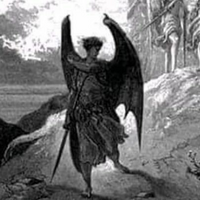
Sale el humo cada vez que me presento, Se abren la tumba de los muertos, Se oyen trompetas, tambores y se escucha un soneto, Empiezan a temblar los simientos, Parpadean las luces del techo, Pentagrama dibujado con sal en el suelo, Llamas ardientes salen de mis ojos, boca y dedos, Alfombra roja se extiende delante de mis pisadas, Sentirás la piel erizada, Respiración aguitada, Olor a azufre en la casa abandonada, Lo que quiero es poseer tu alma, Hijo de la obscuridad, El amo de la tempestad, Deidad escrita en escrituras de la antigüedad, Me ha llamado de distintas formas la humanidad, Diablo, Rey de las tinieblas, Satanás, Pero para ti es sencillo llamame "su majestad".
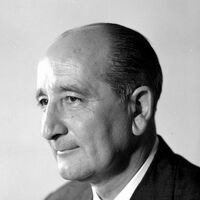
Leopoldo Panero Torbado (Astorga, León, 17 de octubre de 1909 – Castrillo de las Piedras, León, 27 de agosto de 1962) fue un poeta español, miembro de la Generación del 36, dentro de la corriente de la Poesía arraigada de posguerra. Fue hermano del poeta Juan Panero (1908–1937) y padre de Juan Luis Panero (1942), Leopoldo María Panero (1948) y Michi Panero (1951–2004), los dos primeros también poetas. Estuvo casado con Felicidad Blanc (1913–1990). Pasó toda su infancia en Astorga; hizo la Enseñanza Media en San Sebastián y León, y estudió Derecho en las Universidades de Valladolid y Madrid; en esta última se licenció. Sus primeros versos los publicó en Nueva Revista, de Madrid, que él mismo fundó y que publicó sus obras Crónica cuando amanece (1929) y Poema de la niebla (1930). En el otoño de 1929 enfermó de tuberculosis y fue a reponerse al Sanatorium Royal de la Sierra de Guadarrama durante ocho meses y se enamoró de otra paciente, Joaquína Márquez, fallecida algunos meses después. Amplió estudios en Cambridge (1932 a 1934) y en Tours y Poitiers (1935), impregnándose de literatura inglesa y francesa. Publicó en Caballo Verde para la poesía, revista dirigida por Pablo Neruda. Durante la Guerra Civil Panero fue arrestado, conducido a San Marcos de León y acusado de recaudar fondos para Socorro Rojo, pero la mediación de su madre, de Miguel de Unamuno y de Carmen Polo, esposa de Francisco Franco, le evitó males mayores y volvió a Astorga en noviembre. En 1937 murió su hermano Juan, también poeta, en un accidente de automóvil, hecho que le hirió profundamente, transformándole en un conservador; sobre este hecho y en su memoria escribió Adolescente en sombra (1938). En el año 1941 se casó con Felicidad Blanc,1 escritora, de la que tuvo tres hijos, Juan Luis (1942), Leopoldo María (1948) y Michi, los dos primeros también poetas. Durante la guerra entró en Falange Española, y después le nombraron agregado cultural a la Embajada española (1939) y director del Instituto Español (1945–1947) en Londres. Allí conoció y trató a alguno de los más insignes exiliados como Luis Cernuda o Esteban Salazar Chapela, director a su vez del otro Instituto de España, dependiente de la República. A finales de 1949 y comienzos de 1950, participó de la "misión poética"2 con los poetas Antonio Zubiaurre, Luis Rosales y el Embajador Agustín de Foxá, que recorrió diferentes países iberoamericanos (entre otros Honduras) previo al restablecimiento de relaciones diplomáticas entre estos países y el régimen de Franco. Publicó una Antología de la poesía hispanoamericana (1941); publicó también en la revista Escorial (1940) de Madrid, especialmente en sus números 5 y 15, y en Garcilaso. Juventud creadora (1943–1946) y en Haz (1944), también de Madrid. Su libro Versos del Guadarrama, inspirado en el amor perdido de Joaquina Márquez, se publicó en Fantasía, suplemento de La Estafeta Literaria (1945), también de Madrid. Pasa grandes temporadas en esta última ciudad, donde frecuenta la tertulia del Café Lyon, donde entabla amistad, entre otros, con Luis Rosales, Luis Felipe Vivanco y Gerardo Diego, tertulia que se fundió más tarde con la de Manuel Machado. En 1949 recibió el Premio Fastenrath de la Academia por su libro Escrito a cada instante, y al año siguiente el Premio Nacional de Literatura. Más tarde publicó en la revista Poesía Española (1952–1971). Dirigió la revista Correo Literario y figuró en (1952) como organizador de las Exposiciones Bienales de Arte. Fue secretario de una sección del Instituto de Cultura Hispánica. En 1960 publicó Cándida puerta, considerada una de sus obras maestras. Murió dos años después. Sus primeros versos experimentan el influjo de la Generación del 27 y de las Vanguardias; hay ecos de las estéticas del dadaísmo y del surrealismo, así como uso de verso libre. Tras la Guerra Civil abandonó estos conatos transgresores y escribió poemas dentro de la estética del garcilasismo, intimistas, en que el concepto se equilibra perfectamente con la emoción y la forma, de temática conservadora y religiosa. Los autores que inspiran esta segunda fase son Miguel de Unamuno y Antonio Machado. Destacan entre sus libros de poemas La estancia vacía (1944), Versos al Guadarrama (1945), Escrito a cada instante (1949), donde aparecen sus famosas elegías a César Vallejo, que estuvo en su casa invitado por él durante unos días, y a Federico García Lorca; Canto personal (1953), réplica al Canto General de Pablo Neruda escrita en tercetos al que puso prólogo Dionisio Ridruejo, que recibió el Premio 18 de Julio de manos del ministro Raimundo Fernández-Cuesta, y Cándida puerta (1960); en el póstumo Poesía (1963) se recoge toda su obra lírica, y sus Obras completas se imprimieron en 1973. Hizo excelentes traducciones de románticos ingleses. Javier Huerta Calvo ha preparado unas segundas Obras completas (2008) en tres volúmenes, dos de poesía y uno de prosa, por encargo del Ayuntamiento de Astorga, que recogen algunos textos más que las de 1973. Murió en su casa de Castrillo de las Piedras, tras sufrir una angina de pecho mientras regresaba en su vehículo. Poesía * La estancia vacía (fragmentos), M., Revista Fantasía, 1945. * Versos del Guadarrama. Poesía 1930–1939, M., Revista Fantasía, 1945. * Escrito a cada instante, M., Cultura hispánica, 1949 (Premio Nacional de Literatura). * Canto personal. Carta perdida a Pablo Neruda, M., Cultura hispánica, 1953. * Poesía. 1932–1960, M., Cultura Hispánica, 1963 (Prólogo de Dámaso Alonso). * Obra completa, M., Edit. Nacional, 1973. ISBN 978-84-276-1119-1 * Antología de Leopoldo Panero, Barcelona, Plaza & Janés Editores, 1977. ISBN 978-84-01-80928-6 * Por donde van las águilas, Albolote, Editorial Comares, S. L., 1994, ISBN 978-84-8151-098-0 Referencias wikipedia - http://es.wikipedia.org/wiki/Leopoldo_Panero
Quisiera aparecer, sin apariencia. Desnudarme de todas las cosas que sé, de mis convicciones, de todo lo que amo, de lo que evito a toda costa, de las decepciones que he vivido, de los errores que he cometido, de los aciertos, de mis miedos, de lo que me corta la palabra en balbuceos. Despojada de todas esas vestiduras engañosas, ¿qué queda? Un aliento que va y viene, un latido que marca un hondo ritmo —siempre cambiante—, un cuerpo humano, una sombra, una mirada y una pregunta inquietante: ¿quién soy? Y tú: ¿quién eres tú?
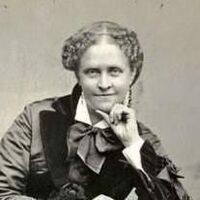
Helen Maria Hunt Jackson, born Helen Fiske (October 15, 1830 – August 12, 1885), was a United States writer who became an activist on behalf of improved treatment of Native Americans by the U.S. government. She detailed the adverse effects of government actions in her history A Century of Dishonor (1881). Her novel Ramona dramatized the federal government's mistreatment of Native Americans in Southern California and attracted considerable attention to her cause, although its popularity was based on its romantic and picturesque qualities rather than its political content. It was estimated to have been reprinted 300 times, and contributed to the growth of tourism in Southern California. Early years She was born Helen Fiske in Amherst, Massachusetts, the daughter of Nathan Welby Fiske and Deborah Waterman Vinal. She had two brothers, both of whom died after birth, and a sister Anne. Her father was a minister, author, and professor of Latin, Greek, and philosophy at Amherst College. Her mother died in 1844 when Helen was fourteen, and her father three years later. Her father provided for her education and arranged for an aunt to care for her. Fiske attended Ipswich Female Seminary and the Abbott Institute, a boarding school run by Reverend J.S.C. Abbott in New York City. She was a classmate of the poet Emily Dickinson, also from Amherst. The two corresponded for the rest of their lives, but few of their letters have survived. Marriage and family In 1852 at age 22, Fiske married U.S. Army Captain Edward Bissell Hunt. They had two sons, one of whom, Murray Hunt, died as an infant in 1854 of a brain disease. In 1863, her husband died in a military accident. Her second son, Rennie Hunt, died of diphtheria in 1865. About 1873-1874, Hunt met William Sharpless Jackson, a wealthy banker and railroad executive, while visiting at Colorado Springs, Colorado, at the resort of Seven Falls. They married in 1875 and she took the name Jackson, under which she was best known for her writings. She was a Unitarian. Career Helen Hunt began writing after the deaths of her family members. She published her early work anonymously, usually under the name "H.H." Ralph Waldo Emerson admired her poetry and used several of her poems in his public readings. He included five of them in his anthology Parnassus. She traveled widely. In the winter of 1873-1874 she was in Colorado Springs, Colorado, in search of a cure for tuberculosis. Here she met the man who would become her second husband. Over the next two years, she published three novels in the anonymous No Name Series, including Mercy Philbrick's Choice and Hetty's Strange History. In 1879 her interests turned to Native Americans after hearing a lecture in Boston by the Ponca Chief Standing Bear. He described the forcible removal of the Ponca from their Nebraska reservation and transfer to the Quapaw Reservation in Indian Territory, where they suffered from disease, climate and poor supplies. Upset about the mistreatment of Native Americans by government agents, Jackson became an activist. She started investigating and publicizing government misconduct, circulating petitions, raising money, and writing letters to the New York Times on behalf of the Ponca. A fiery and prolific writer, Jackson engaged in heated exchanges with federal officials over the injustices committed against American Indians. Among her special targets was U.S. Secretary of Interior Carl Schurz, whom she once called "the most adroit liar I ever knew." She exposed the government's violation of treaties with the American Indian tribes. She documented the corruption of US Indian agents, military officers, and settlers who encroached on and stole Indian lands. Jackson won the support of several newspaper editors who published her reports. Among her correspondents were editor William Hayes Ward of the New York Independent, Richard Watson Guilder of the Century Magazine, and publisher Whitelaw Reid of the New York Daily Tribune. Jackson also wrote a book, the first published under her own name, condemning state and federal Indian policy, and detailing the history of broken treaties. A Century of Dishonor (1881) called for significant reform in government policy toward Native Americans.[10] Jackson sent a copy to every member of Congress with a quote from Benjamin Franklin printed in red on the cover: "Look upon your hands: they are stained with the blood of your relations." The New York Times later wrote that she "soon made enemies at Washington by her often unmeasured attacks, and while on general lines she did some good, her case was weakened by her inability, in some cases, to substantiate the charges she had made; hence many who were at first sympathetic fell away." Jackson went to southern California for respite. Having been interested in the area's missions and the Mission Indians on an earlier visit, she began an in-depth study. While in Los Angeles, she met Don Antonio Coronel, former mayor of the city and a well-known authority on early Californio life in the area. He had served as inspector of missions for the Mexican government. Coronel told her about the plight of the Mission Indians after 1833. They were buffeted by the secularization policies of the Mexican government, as well as later U.S. policies, both of which led to their removal from mission lands. Under its original land grants, the Mexican government provided for resident Indians to continue to occupy such lands. After taking control of the territory in 1848, the U.S. generally disregarded such Mission Indian occupancy claims. In 1852, there were an estimated 15,000 Mission Indians in Southern California. By the time of Jackson's visit, they numbered fewer than 4,000. Coronel's account inspired Jackson to action. The U.S. Commissioner of Indian Affairs, Hiram Price, recommended her appointment as an Interior Department agent. Jackson's assignment was to visit the Mission Indians, ascertain the location and condition of various bands, and determine what lands, if any, should be purchased for their use. With the help of the US Indian agent Abbot Kinney, Jackson traveled throughout Southern California and documented conditions. At one point, she hired a law firm to protect the rights of a family of Saboba Indians facing dispossession from their land at the foot of the San Jacinto Mountains. In 1883, Jackson completed her 56-page report. It recommended extensive government relief for the Mission Indians, including the purchase of new lands for reservations and the establishment of more Indian schools. A bill embodying her recommendations passed the U.S. Senate but died in the House of Representatives. Jackson decided to write a novel to reach a wider audience. When she wrote Coronel asking for details about early California and any romantic incidents he could remember, she explained her purpose: "I am going to write a novel, in which will be set forth some Indian experiences in a way to move people's hearts. People will read a novel when they will not read serious books."[14] She was inspired by her friend Harriet Beecher Stowe's Uncle Tom's Cabin (1852). "If I could write a story that would do for the Indian one-hundredth part what Uncle Tom's Cabin did for the Negro, I would be thankful the rest of my life," she wrote. Although Jackson started an outline in California, she began writing the novel in December 1883 in her New York hotel room, and completed it in about three months. Originally titled In The Name of the Law, she published it as Ramona (1884). It featured Ramona, an orphan girl who was half Indian and half Scots, raised in Spanish Californio society, and her Indian husband Alessandro, and their struggles for land of their own. The characters were based on people known by Jackson and incidents which she had encountered. The book achieved rapid success among a wide public and was popular for generations; it was estimated to have been reprinted 300 times. Its romantic story also contributed to the growth of tourism to Southern California. Encouraged by the popularity of her book, Jackson planned to write a children's story about Indian issues, but did not live to complete it. Her last letter was written to President Grover Cleveland and said: "From my death bed I send you message of heartfelt thanks for what you have already done for the Indians. I ask you to read my Century of Dishonor. I am dying happier for the belief I have that it is your hand that is destined to strike the first steady blow toward lifting this burden of infamy from our country and righting the wrongs of the Indian race." Jackson died of stomach cancer in 1885 in San Francisco, California. Her husband arranged for her burial on a one-acre plot on a high plateau overlooking Colorado Springs, Colorado. Her grave was later moved to Evergreen Cemetery in Colorado Springs. At the time of her death, her estate was valued at $12,642. She used her married names, Helen Hunt and Helen Jackson, but she is most often referred to as Helen Hunt Jackson. The New York Times referred to her as Helen Hunt Jackson in 1885, reporting on her final illness, and in 1886, reporting on visitors to her grave. The name was used during her lifetime by others, though she disliked the practice. "It is not proper to keep one's first married name, after a second marriage", she wrote to Moncure Conway. To Caroline Healey Dall, she admitted she was "positively waging war" against being called "Helen Hunt Jackson". Critical response and legacy Jackson's A Century of Dishonor remains in print, as does a collection of her poetry. A New York Times reviewer said of Ramona that "by one estimate, the book has been reprinted 300 times." One year after Jackson's death the North American Review called Ramona "unquestionably the best novel yet produced by an American woman" and named it, along with Uncle Tom's Cabin, one of two most ethical novels of the 19th century. Sixty years after its publication, 600,000 copies had been sold. There have been over 300 reissues to date and the book has never been out of print. The novel has been adapted for other media, including three films, stage, and television productions. Valery Sherer Mathes assessed the writer and her work: Ramona may not have been another Uncle Tom's Cabin, but it served, along with Jackson's writings on the Mission Indians of California, as a catalyst for other reformers ....Helen Hunt Jackson cared deeply for the Indians of California. She cared enough to undermine her health while devoting the last few years of her life to bettering their lives. Her enduring writings, therefore, provided a legacy to other reformers, who cherished her work enough to carry on her struggle and at least try to improve the lives of America's first inhabitants. Her friend Emily Dickinson once described her limitations: "she has the facts but not the phosphorescence." In a review of a film version, a journalist wrote about the novel, calling it "the long and lugubrious romance by Helen Hunt Jackson, over which America wept unnumbered gallons in the eighties and nineties," and complained of "the long, uneventful stretches of the novel."[26] In reviewing the history of her publisher, Houghton Mifflin, a 1970 reviewer noted that Jackson typified the house's success: "Middle aged, middle class, middlebrow." Jackson herself wrote, "My Century of Dishonor and Ramona are the only things I have done of which I am glad.... They will live, and... bear fruit." A portion of Jackson's Colorado home has been reconstructed in the Colorado Springs Pioneers Museum and furnished with her possessions.


